July 2021
As mentioned in other chapters, I got to escape the COVID pandemic and travel to Iceland for 12 days with National Geographic and Natural Habitat on the Nat Geo Explorer in July of 2021. My good friend Marilyn joined me and we both saw this as an opportunity to get away and regroup. We circumvented the island of Iceland on the National Geographic Explorer in conjunction with Natural Habitat, stopping at many small islands and villages and seeing many, many waterfalls (please see the posts on each of these). But this post is about the birds of Iceland, in particular the Atlantic puffin.
Puffin
So, why are these birds called puffins? Not a good reason. The name “puffin” came from the word “puffy” meaning swollen, which was used to describe the fatty, salted meat of young Manx shearwater birds, who were totally unrelated to today’s puffins. And yet, that is what they are called.
Having said that, I have to tell you that the puffin has been and still is a traditional food in Iceland. It was only in 2011 that puffin hunting was suspended due to plummeting numbers of these birds (not because they were being eaten but because of the warming ocean). So maybe puffin meat is fatty and salted too. I did not try to find out.
Auks
Puffins are part of the auk species, which means they dive into the water to find their food. It also means they breed in large colonies – more on breeding later. The puffins in Iceland are Atlantic puffins (Fratercula artica) and are nickmaned the “little brother of the north” (there are also tufted puffins and horned puffins which are found in the North Pacific Ocean).
Where in Iceland do you see puffins?
As I have mentioned before, I had been to Iceland a few previous times (please see the original Iceland post). But I had never really seen puffins. On one trip there were a few puffins up in the cliffs, but they were too far to really see them. So I was very hopeful that this trip would prove different and I would really get to see them. And see them we did!
It is estimated that Iceland has about 10 million puffins with the largest colony in the world in the Westmann Islands of Iceland. And probably for that reason, the puffin is Iceland’s unofficial emblem.
Our first sighting
Our first sighting was on the island of Flatey (please see the post on Flatey). We headed down to the lower deck and took turns climbing into zodiacs. As the spray hit our faces, we approached the island and pulled close to the sandy shore for a wet landing. We had our muck boots on, climbed into the shallow water and, just like the birds, waded onto shore. Grace Winer, one of the naturalists on board, was our guide that day and she pointed out all the birds. But our first sightings was not of puffins but of ducks and terns. More on them below because I really want to write about the puffins first.
After touring the entire island (don’t fret, it is a small island), I finally left the group and wandered on my own heading up a dirt path to the cliffs of Flatey as that’s where I heard the I could find puffins. After about a 15 minute hike, I reached the cliffs where some of my fellow shipmates were sitting on the grass, some snapping pictures and many just watching. I picked a rock to sit on and tried to look over the edge, but still didn’t see much. Two young men from our ship invited me to sit closer to the edge, on the grass. I told them they would have to help me up if I sat down there. And they promised they would.
And then I saw them. There were not hundreds of them on Flatey, but when we got to Grimsey a few days later, there were hundreds of puffins. Puffins swimming in the water or just floating (called “loafing”). Puffins in the air. Puffins here, puffins there, puffins everywhere. At Grimsey I again sat at the edge of the cliffs and just watched as they took off. As they landed. As they just walked around. As they swam below me. I realized I was actually sitting with my legs in front of their burrows, so I moved to another spot where I would not frighten them.
No matter which island, I was entranced watching them as they really are funny little birds unlike all others.
What do they look like?
Footballs. They look like black and white footballs. While penguins, to whom they are often compared, are sleek, puffins are stocky with large beaks that look like they should fall over. Like penguins, their bodies are black and white, black on top and white on the bottom which protects them from predators both from the sea and from the sky. During the breeding season, their beaks turn a bright orange. Interestingly, the rest of the time, they shed their bills which leaves a smaller and duller beak. Luckily we were here during breeding season.
They are relatively small, weighing only about 13 ounces and standing only about a foot high, although their wingspan can reach 20 inches. Also like penguins, they have short wings which are adapted for flying underwater. But unlike penguins, they can also fly in the air. They are quite funny to watch as their wings beat very fast, up to 400 times a minute as they fly low over the water. But even with their small, fast moving wings, they can reach speeds up to 55 miles an hour. Often they would catch the wind and just hover in the air as if standing still.
And in the water- they are like little motor boats.
Their short legs are bright orange/red and are situated towards the back of their bodies which makes it look like they are standing upright.
I thought it would be quite noisy with puffins all around, but it was not. Puffins are silent when they fly and only vocalize in their breeding colonies.
Mating
Like penguins, puffins mate for life. When the male begins courtship, he flicks his head up and back repeatedly, so that his colorful orange beak points upwards. Once they mate, the two birds will swing their bills sideways, clashing them together repeatedly. Must be their way of kissing.
Breeding
I mentioned that on Grimsey I found myself sitting near the puffins’ burrows. That is how they breed. They live in large colonies often on the coastal cliffs and they nest in crevices among the rocks or in burrows in the soil.
It is the male puffin who digs a 5-6 feet long burrow (or tunnel) into the soft soil and builds their nest there, lining it with grass, leaves and feathers. Sometimes they will breed in rabbit burrows. Why do all that work of digging if someone else has already done it? Each year they return to the same burrow.
Usually the female only lays one egg, which is usually creamy white, but sometimes could be tinged with purple. Both the male and female incubate the egg by using their wings to hold the egg against their brood patch (featherless skin on the underside of the bird; since feathers are insulating they would prevent efficient incubation, so during the breeding seasons, the feathers are shed). And once hatched, both parents feed the chick, also called a puffling (I love that word).
The pufflings stay in the burrow until they are ready to take off, usually over a month. Although not nocturnal, the pufflings fledge, or fly off, at night and then spend the first few years of their lives at sea.
The “Night of the Pufflings”
If you look up “pufflings” in the dictionary, you won’t find it. The name “piffling” came from the fairly tale “Night of the Pufflings” by Bruce McMillan. Bruce made up the word. In the story local children, known as the youth patorls, rescue young puffins, which he called pufflings. But is the story a fairy tale? Nope. It is a true story from the island of Heimaey in the Vestmannayjar archipelago.
I mentioned above that the pufflings fledge at night at fly out to sea where they learn to forage for fish. However, with the growth of towns and cities, there are now lights everywhere which confuse the pufflings. Instead of finding the dark deep ocean, they fly and land on shining black asphalt where they are easy prey for cats and dogs. So children patrol the area, collect the stranded pufflings, put them in cardboard boxes and release them back into the sea at the break of morning.
Eating
Puffins eat fish and zooplankton. They might dive down 200 feet in search of fish. But when it comes to their puffling, they feed them small marine fish several times a day. Unlike other birds, they do not regurgitate swallowed fish for their puffling but feed whole little fish directly to young. Only later might they drop the fish on the floor of the nest. But that means they have to constantly fly back to sea to catch enough fish. And catch them they do. I often saw them flying with over ten fish hanging crosswise from their mouths. How do they do that? They have a unique hinging mechanism in their beaks which allows them to place their upper and lower biting edges of their beaks at all different angles. This also allows them to hold on to fish they already caught while diving for more. Seeing them fly with these fish hanging out of the beaks is an amazing sight.
Clowns or smart?
Although puffins spend most of their lives on the water, they are still called the clowns of the sea. That may be in part because of their bright orange beaks. But more likely it is because of how they take off and land both of which have been described as a comedy routine. I watched them take off and land for many, many minutes at all the different sites. To take off, they get a running start. You see their little orange-red feet running as fast as they can, on land or on the water, and then they flap their wings and take off. Yes, they can actually run on the water! And when they land, they seem to stop in mid-air, put their orange-red feet down below them, and like a helicopter, settle down onto the ground. If they are landing on the water they look like they are doing a belly-flop or tumbling and rolling on the surface of the water. I must admit they were quite funny to watch.
But they are no clowns. Puffins have been observed to use sticks to scratch themselves. That means they have the ability to use tools. It is not just man who is smart enough to be a tool user.
Arctic Terns
It wasn’t just puffins that we encountered. We had quite the adventure with Artic terns. Terns are beautiful, elegant looking birds with a forked tail, a black cap on their head, pointed wings and red legs and a red beak. But look out!
Arctic Terns are in the Laridae family and ‘family’ is a good term for them. We were here during breeding season and the terns are extremely territorial and protective of their eggs, which are very well camouflaged in a small depression in the ground, and of their young (as they should be!). On several islands, as we came within range of their nests they began flying and screeching and attacking us. Yes, attacking us. We were given sticks to hold up as the terns will attack the highest point. Better the stick than your head. On the island of Skalanes, we picked Lupins to hold up high.
I know all this sounds funny, but these birds were serious. There were hundreds of them flying around darkening the sky and making such a racket. It was as if they were screeching, “Get away! Leave! You interlopers! Dive, dive, dive.” I felt a little bad that we were causing them such anxiety. But they did not know we were just tourists. To them we were endangering their young. For such a small bird, ranging in length from 11-15 inches, they are surprisingly aggressive.
On the island of Vigur, as the sun was setting, they followed us along the path by the water and then, as we stood around in a group listening to our guide, they began attacking in seriousness. One of our new friends, Margaret, held her stick up high and one particular bird kept dive-bombing her. The tern would attack the stick and Margaret would cover her head. Luckily no one was hurt.
Black Guillemot
The black guillemot (or tystie) is another bird we saw everywhere. They are easy to identify as, as the name suggests, they are all black except for a white patch on their wings and white on the underside of their wings during the breeding season. In the winger they became all white below and specked and brown and white on top to camouflage into their surroundings. Their beaks are always black and pointed but they have bright red legs. They are on the small side at about 14 inches long with a wing span of about 20 inches. They can dive very deep and feed on the bottom of the sea. And once they catch their fish, they can hold them in their beak for hours. I watched one doing just that.
Common Eider Duck
We saw a few eider ducks first on Flatey and later on Vigur Island, which has about 4000 ducks. These are large ducks (about 20-28 inches long) who build their nests close to the sea. We only saw one male on Flatey Island and he had his head tucked beneath his wing, sleeping the entire time. But we saw several females and lots of chicks. The females looked like they had been carved and sculpted. Beautiful.
Eider ducks can live 20 years and each year, they come back to the same place to nest. What is very special about both the duck and their nests is that they line the nest with eiderdown, the feathers shed from the female’s breast. She has an outer layer  of down feathers and an inner layer which continues to keep her warm. Once the ducks are finished with their nests, the farmers walk across the island collecting the down from all the nests and replacing it with straw. The eiderdown is then dried in the sun, when there are sunny days. It is then cleaned of the grass and shells and finally about 80% of it is sold to be made into quilts and pillows as it is very soft and warm. And very expensive at about $1500 a kilo! See the post on Vigur Island to learn more about the eiderdown.
of down feathers and an inner layer which continues to keep her warm. Once the ducks are finished with their nests, the farmers walk across the island collecting the down from all the nests and replacing it with straw. The eiderdown is then dried in the sun, when there are sunny days. It is then cleaned of the grass and shells and finally about 80% of it is sold to be made into quilts and pillows as it is very soft and warm. And very expensive at about $1500 a kilo! See the post on Vigur Island to learn more about the eiderdown.
Redshank
When we embarked off our zodiacs onto land on Flatey Island, the first bird we saw was a redshank. I couldn’t miss those bright orange spindly legs and the orange spot on it long, thin black beak which they use to reach into the ground to find their favorite food, invertebrates. Seeing the redshank right away should not have been a surprise as it is estimated that there are over 75,000 breeding pairs of redshanks in Iceland. In Icelandic, the bird is called “steklur” which means stalk, referring to the bird’s long and slender legs (the better to wade with in ponds and on the shores of the sea). In Danish “Rodben” means red legs, although the Icelandic version of the bird has orange legs. The rest of the bird is more brownish but almost in a speckled or striped way.
The redshank is from the Tringa species and likes to live in marches or moist meadows while breeding. Other times they prefer to live along the sea. The island of Flatey provides both those things. The bird itself is considered a medium sized wader at about 5.3 ounces and about 10 inches long. It is particularly funny to watch it fly as it flies in a zig zag motion interspersed with gliding. The bird we first saw was sitting on a rock which is it seems to like to do, watching over it’s nesting area. But you don’t have to see the bird to know it is there. All you have to do it listen because the redshank’s cry is so distinctive: tííjúú-tííjúú-tjiikk-tjiikk.
Like the puffins, both the male and female care for the 3-4 eggs in their grassy nest. The babies are protected in part they blend into their surroundings with their dark brown body with light-brown or yellowish stripes. Different from many other species, the mother leaves the babies as soon as they fledge, but the father stays with them until they learn to fly, showing them the good places to find food and calling out in their high pitch to warn them of dangers.
Whooping Swans
There was one day when we drove along the Eastern coast on our way to Fjallsarlon to see the glacier and ice bergs. On the way we passed the Alftafjorour which means “Swan Fjord,” called that because there can be thousands of Whooper Swans (pronounced hooper) there at any given time. The farmers in that area are not wild about them as the swans go into their field and attack their sheep, but they are protected so no one can harm them.
Whooper swans are the only ones found in Iceland. Like the others birds described above, they also mate for life and their cygnets, as their babies are called, stay with them all winter and are even sometimes joined by offspring from previous years. Both the male and female help build the nest, and the male will stand guard over the nest while the female incubates.
As we drove by, we saw lots of swans. Not hundreds as are sometimes there, but still more than I had ever seen in one spot. Some were floating on the water. Some were on land. All looked elegant, as swans are bound to do.
Other birds
There were lots of other birds all around Iceland. Gulls. Ducks. Swans. Nat Geo provided us with a chart with all the birds so you can see it here. That’s one of the wonderful things about Iceland. Yes, there are waterfalls galore (and I have a separate post on all those waterfalls). There are ice bergs. There are glaciers. There are beautiful green mountains. There are goats and whales and of course, the famous Icelandic horses. And there are the friendliest people. But the puffins and all the other birds are part of the wonder of the place.
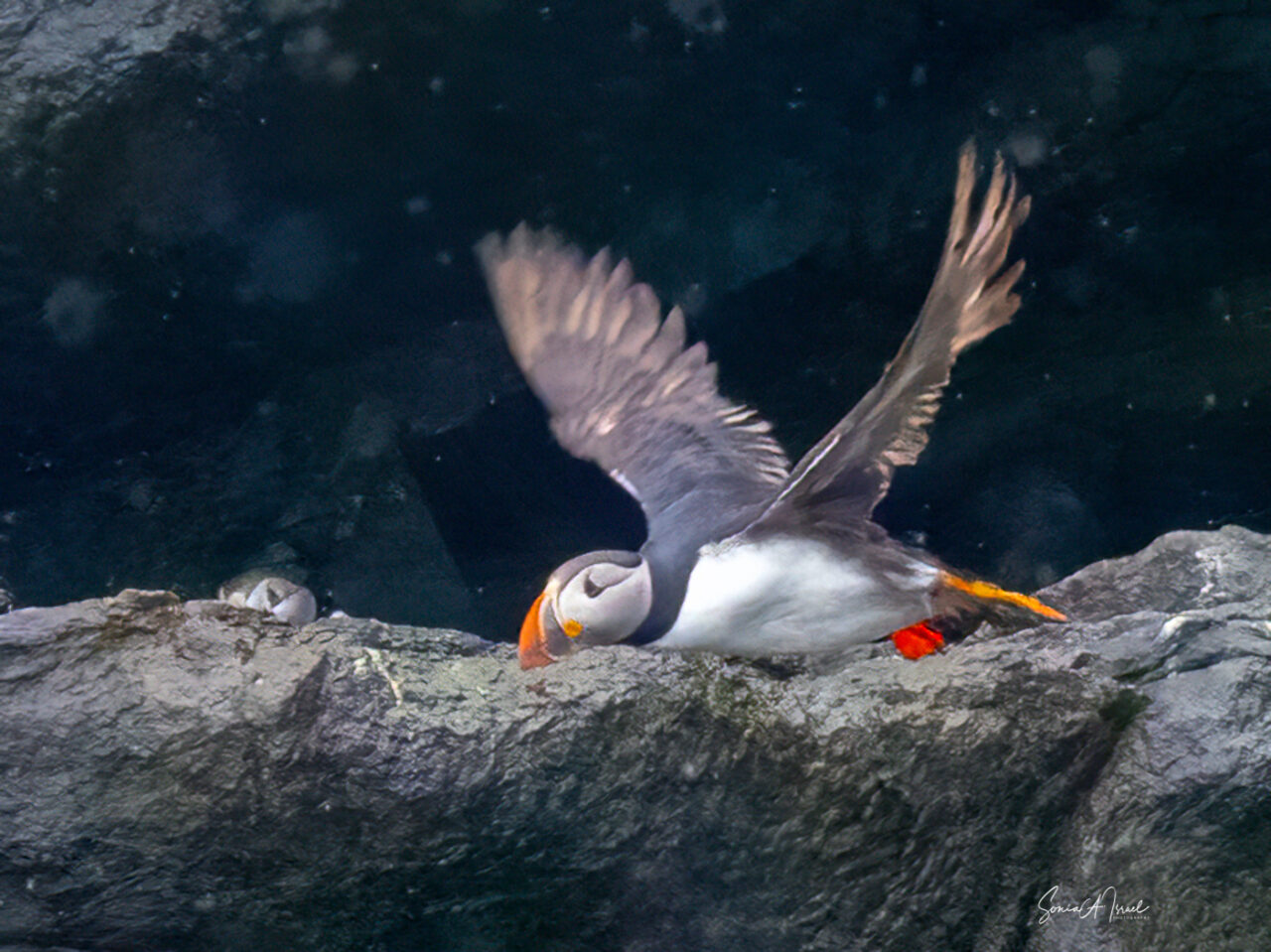
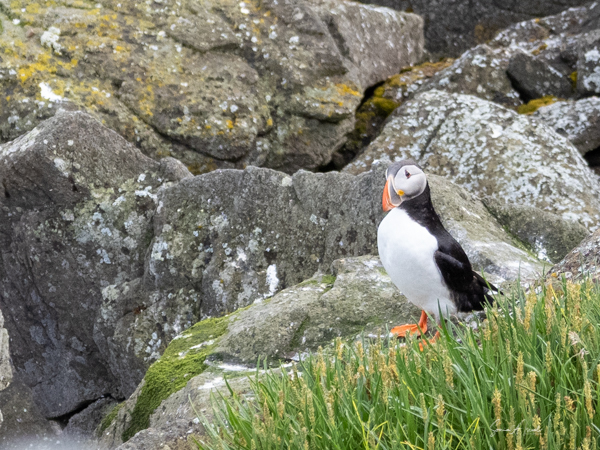
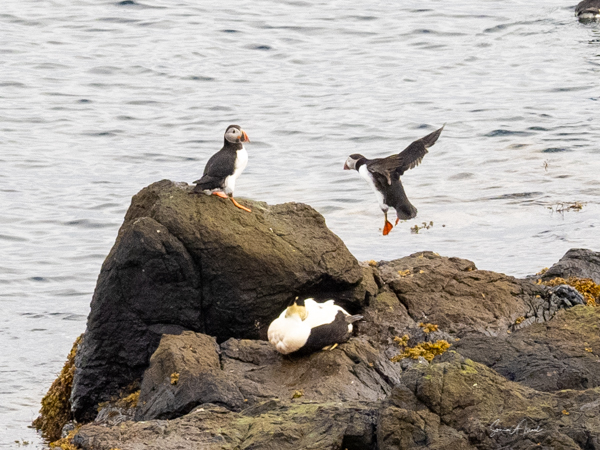
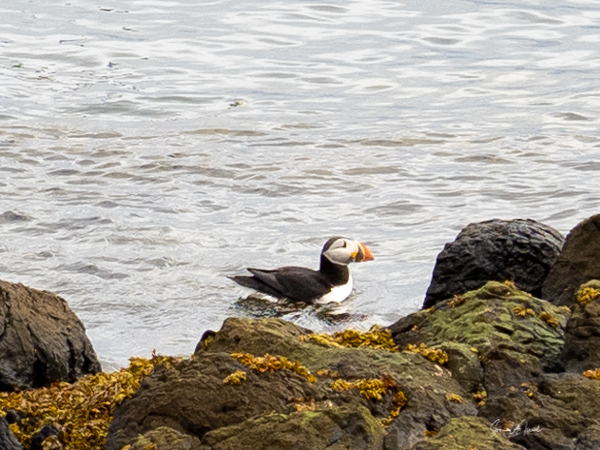
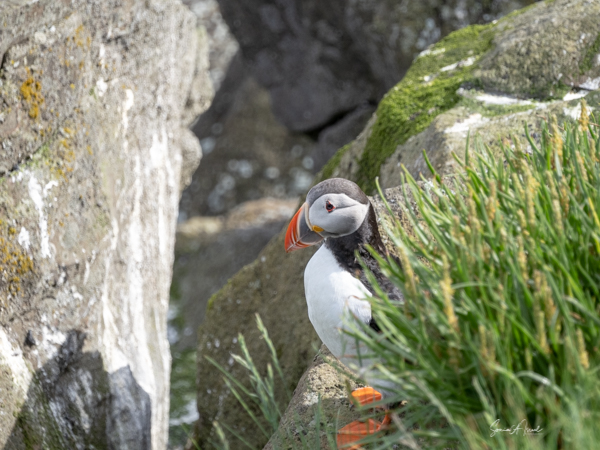
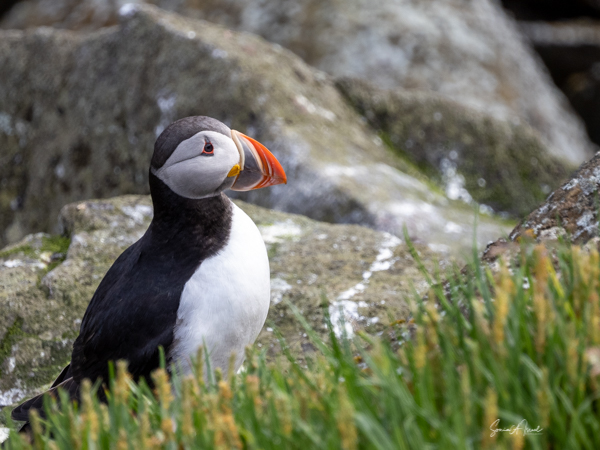
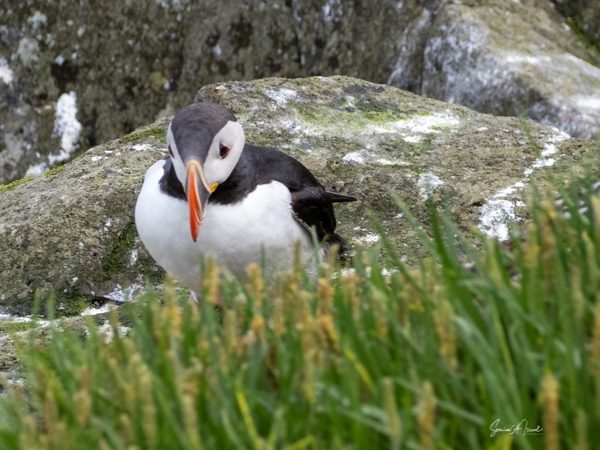
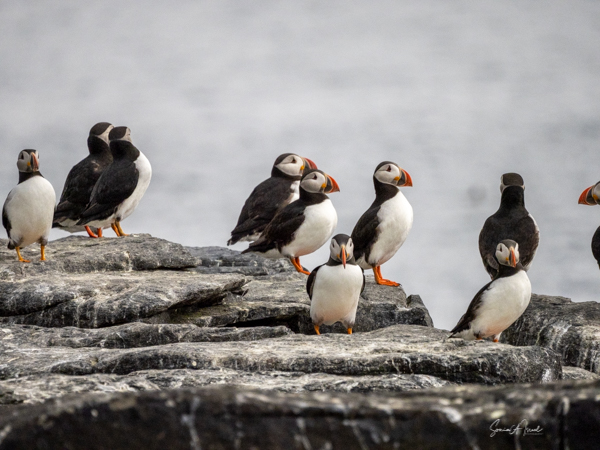
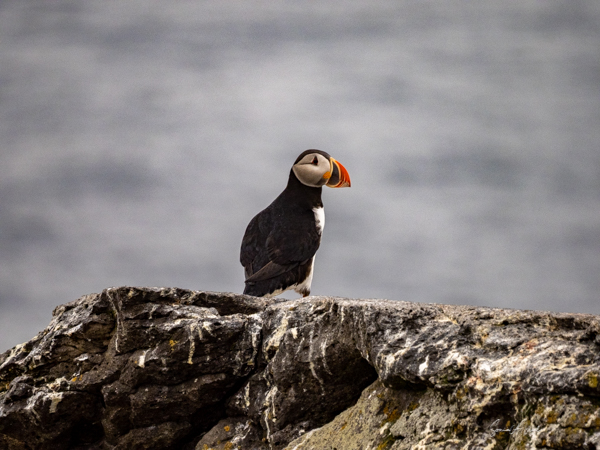
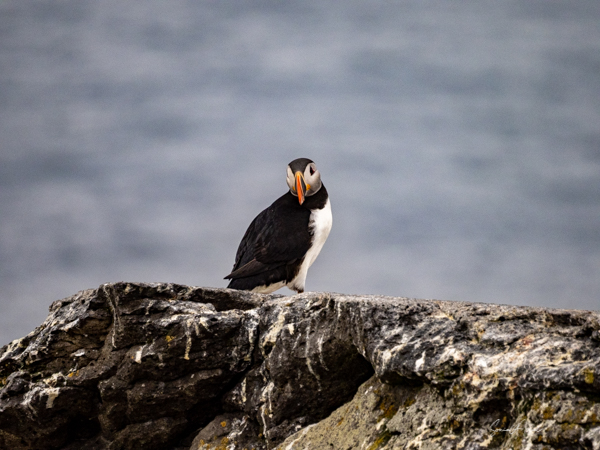

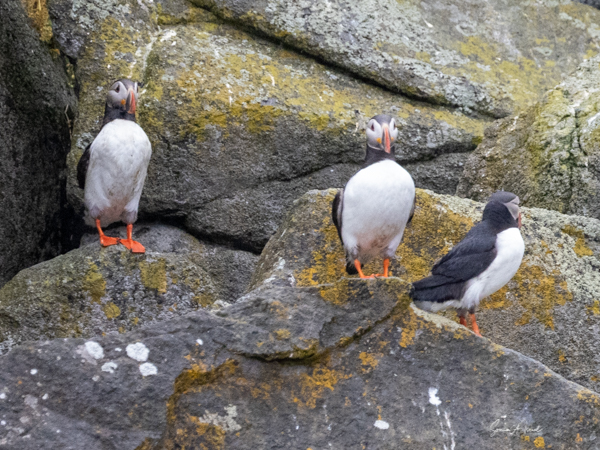
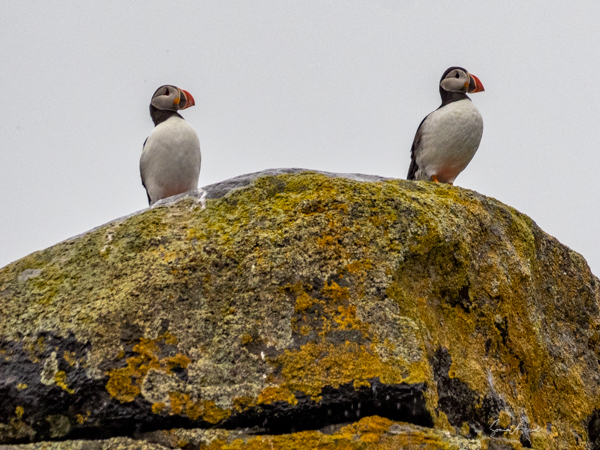
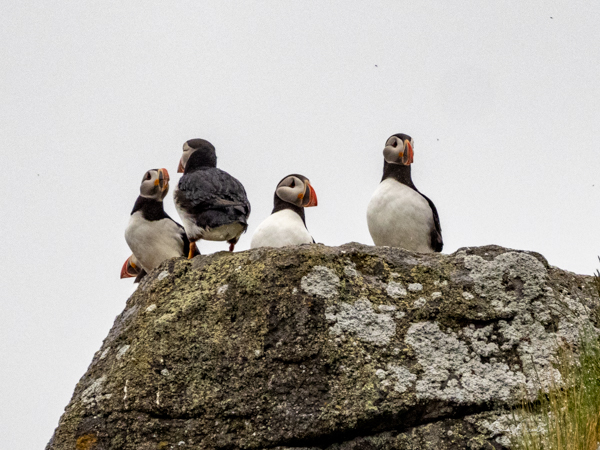
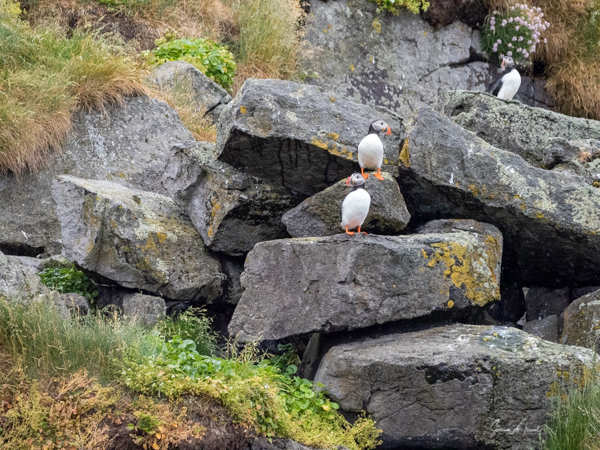
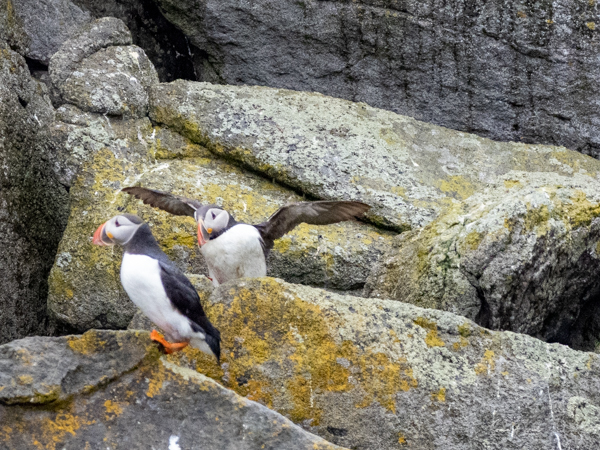
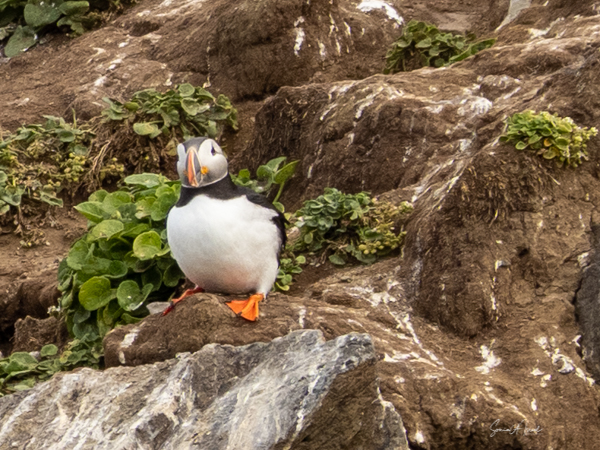
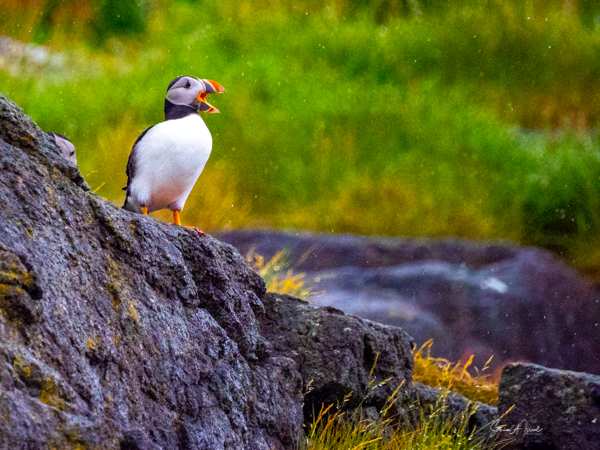
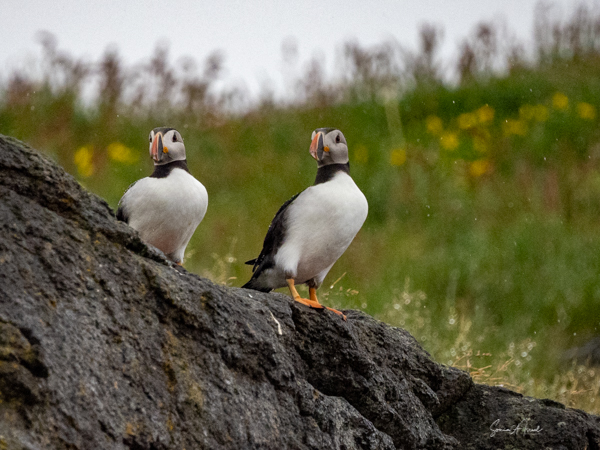
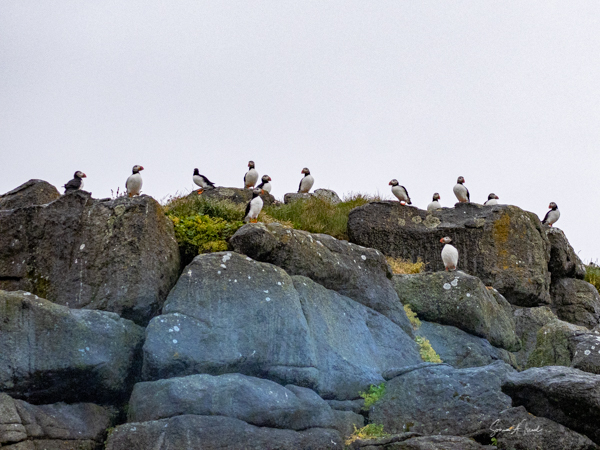
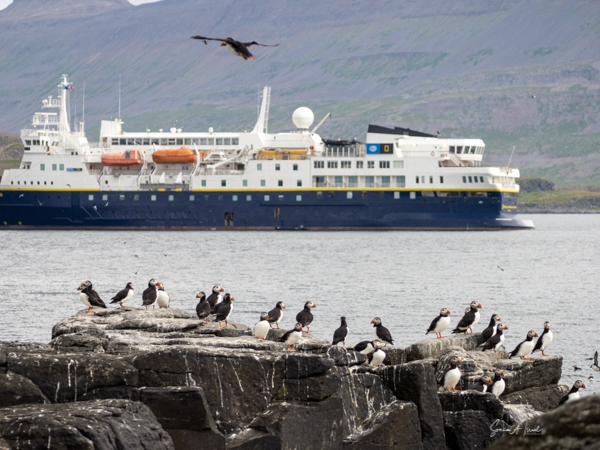
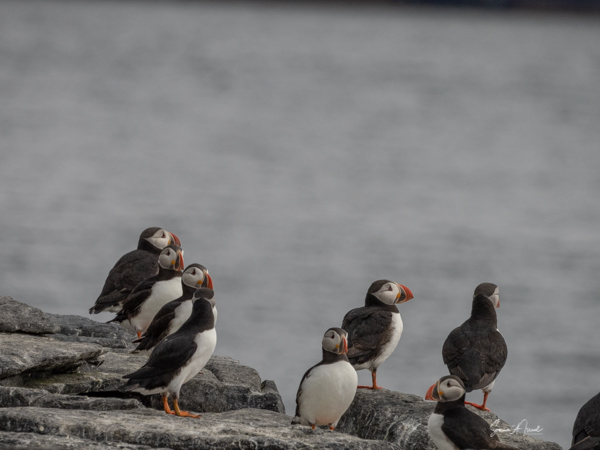
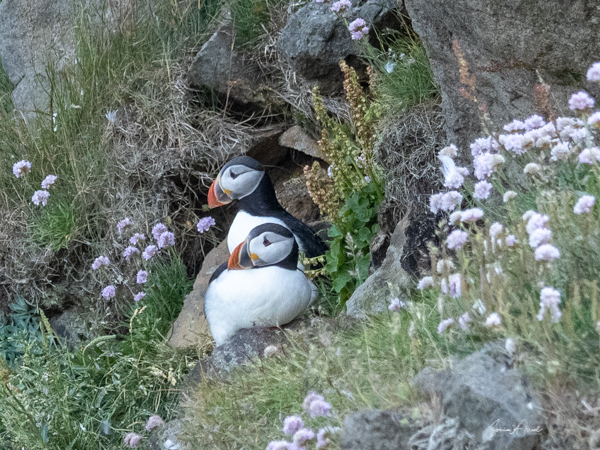
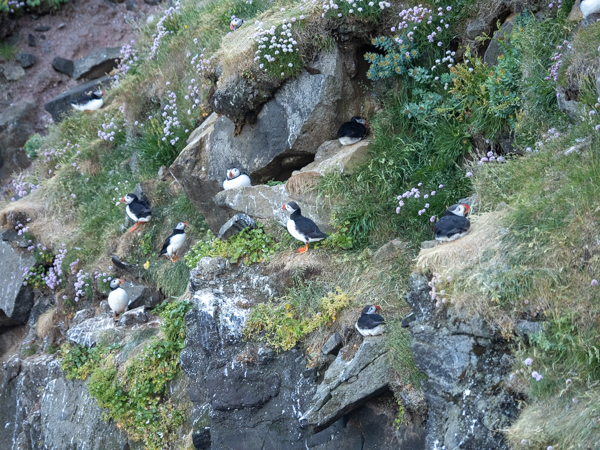
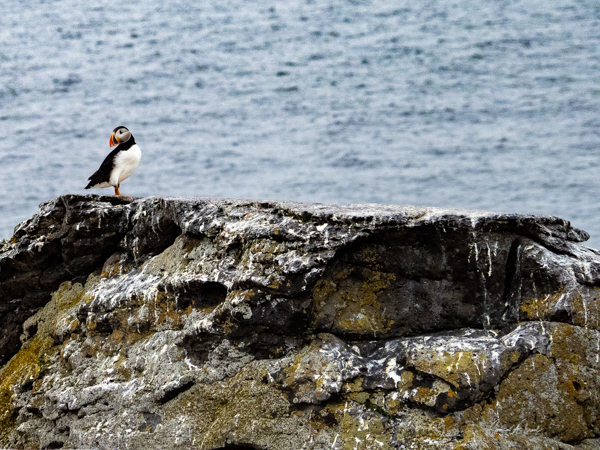
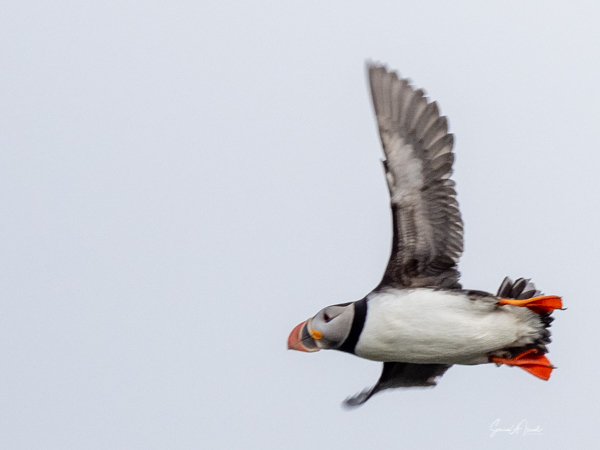
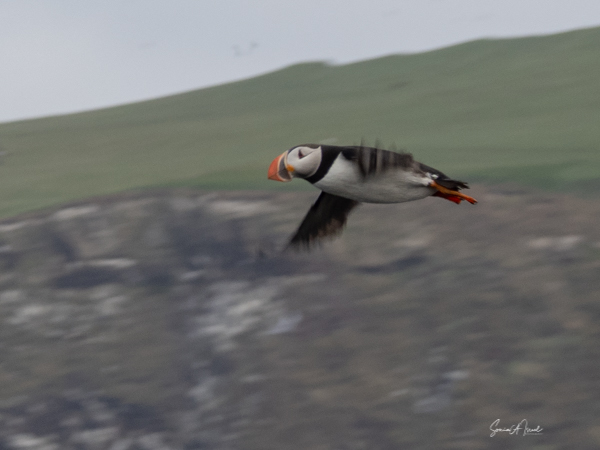
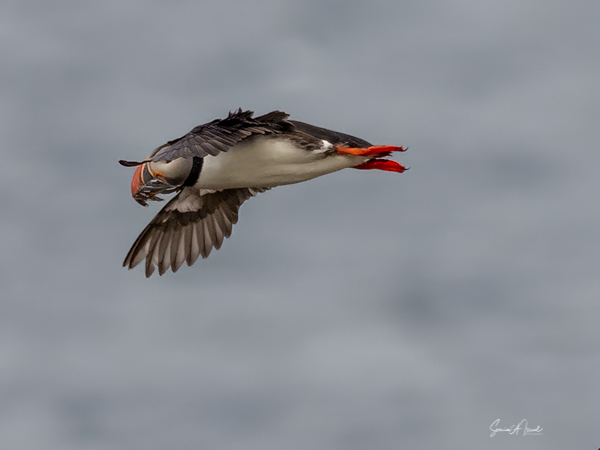
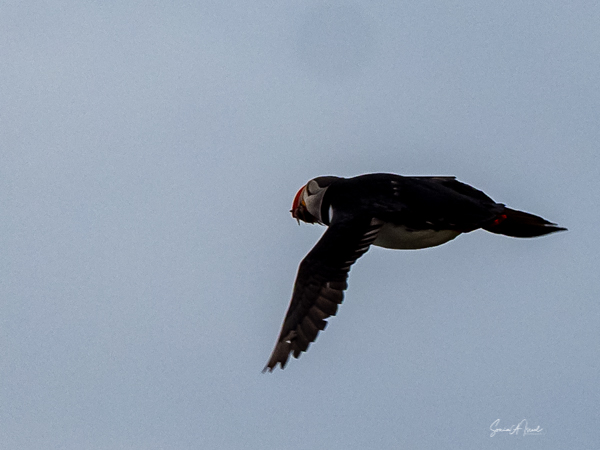
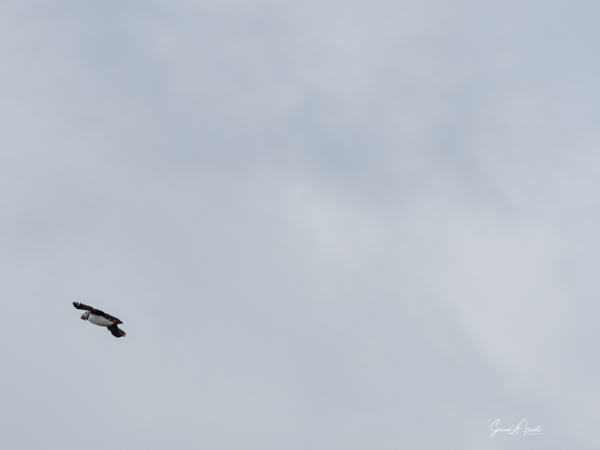
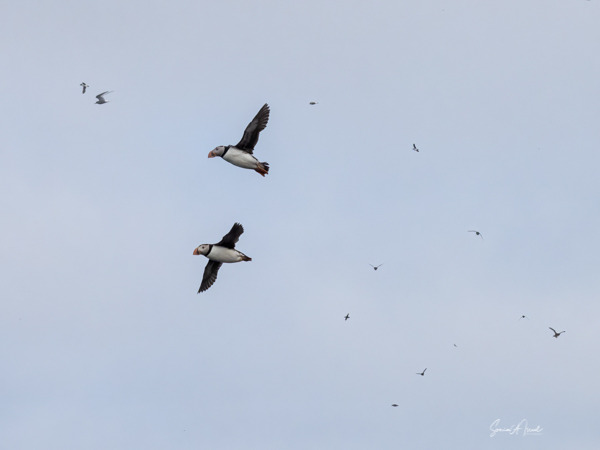

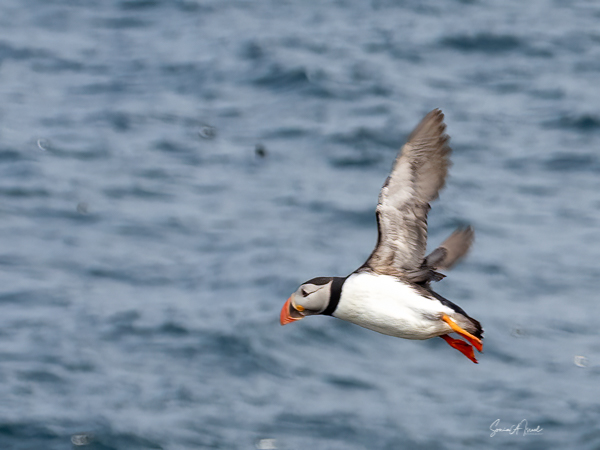
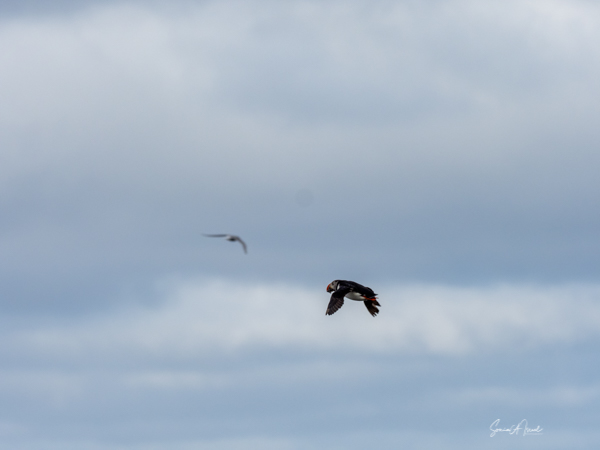
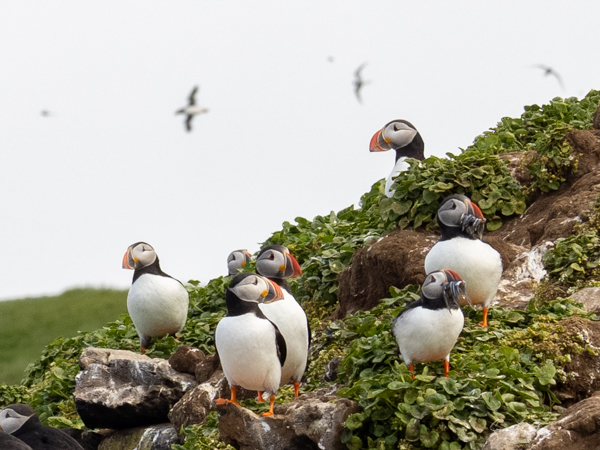
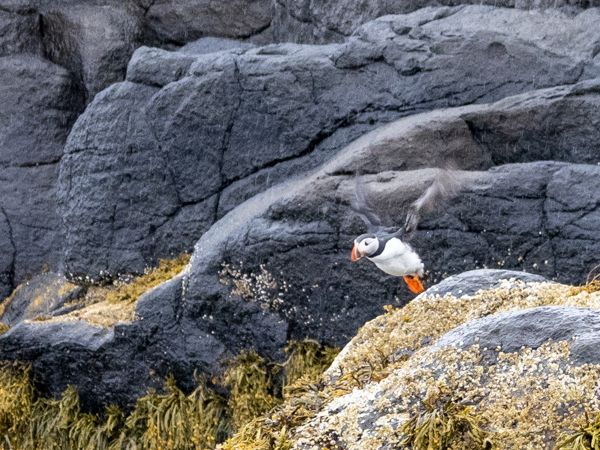
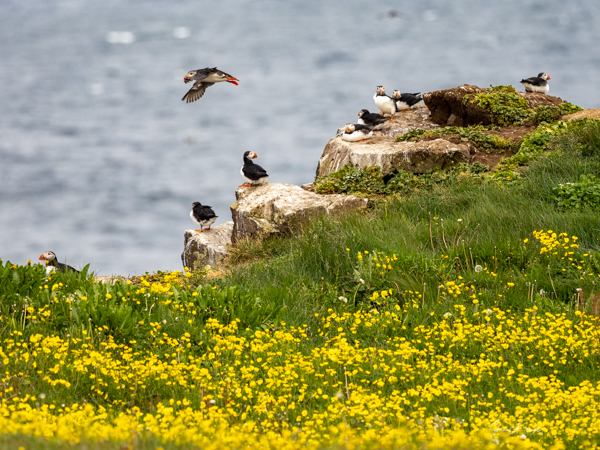
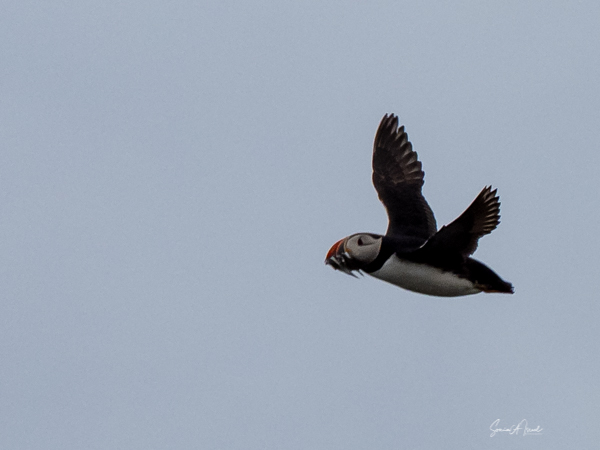
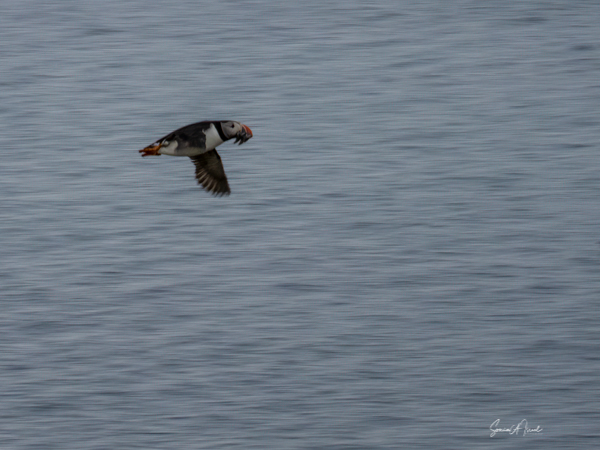
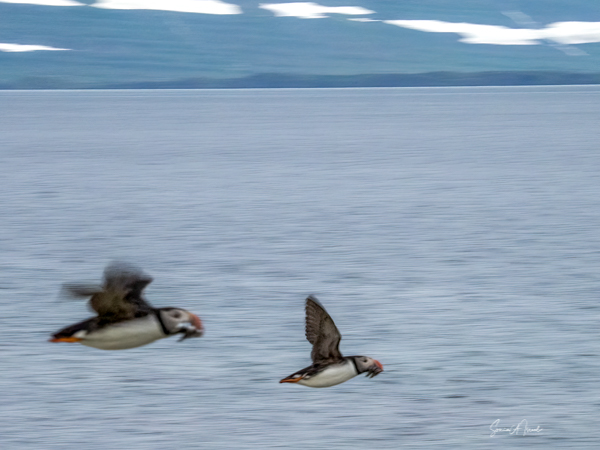
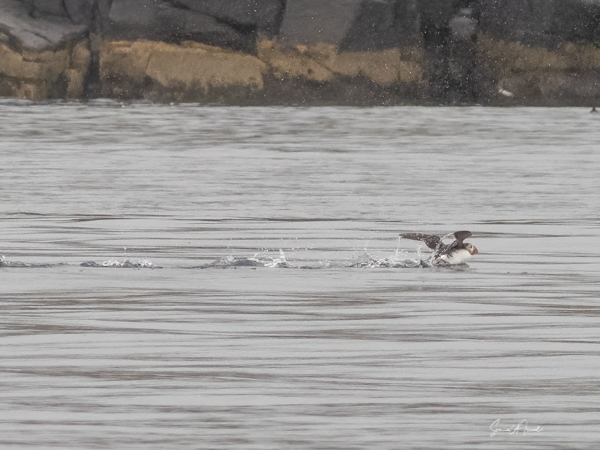
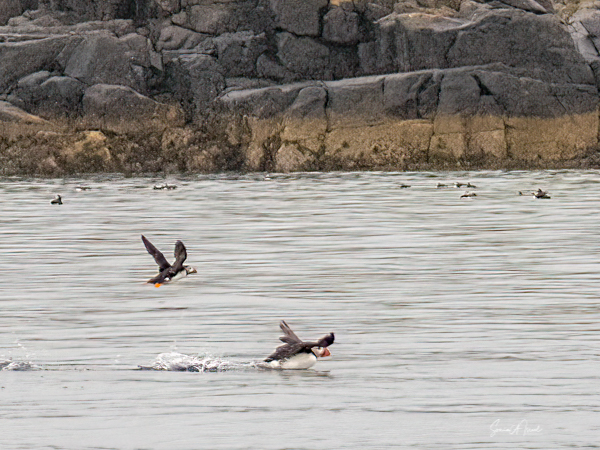
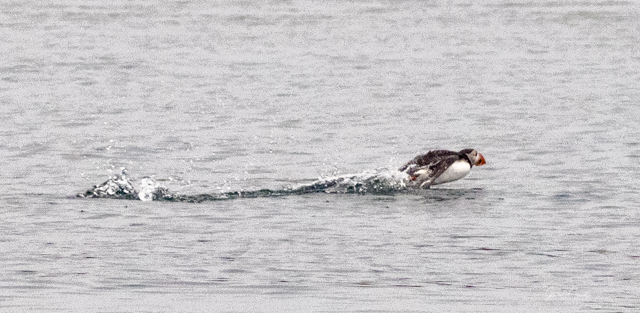
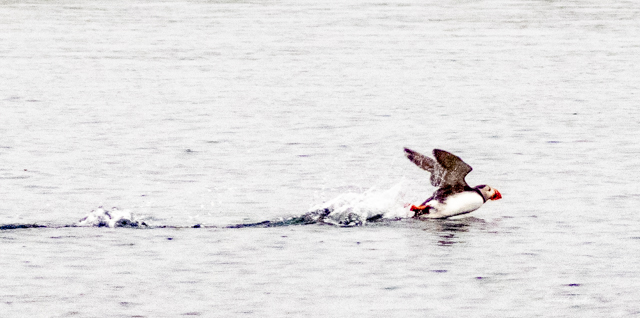
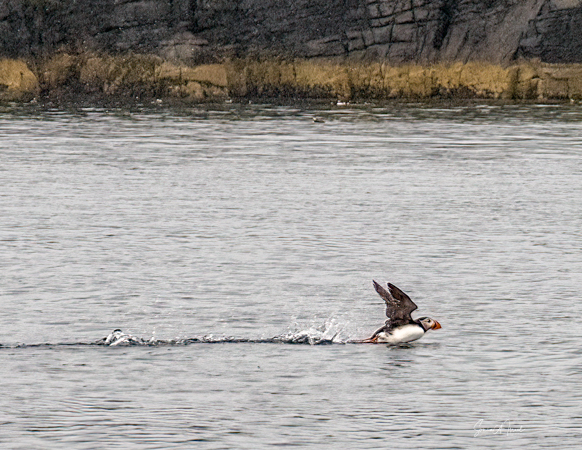
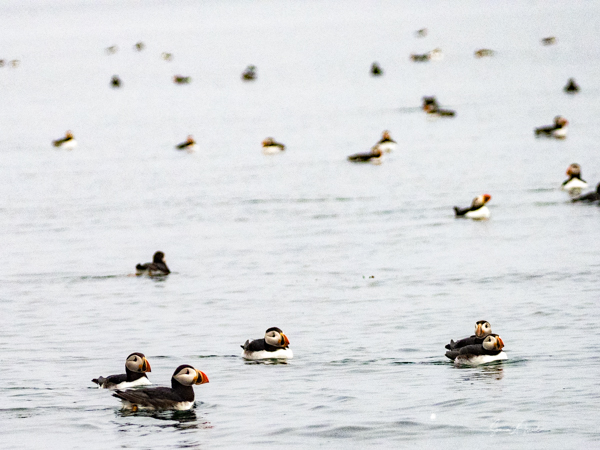
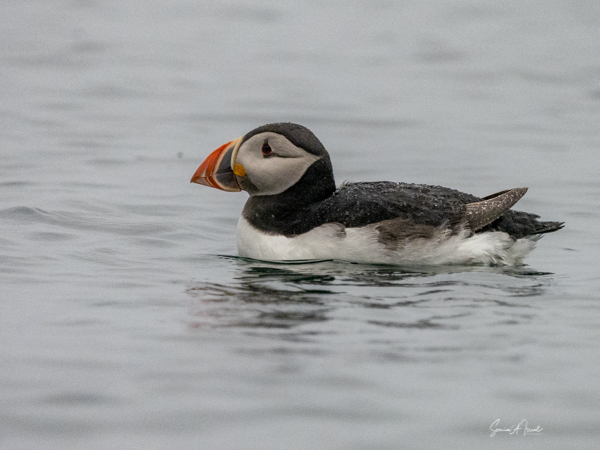

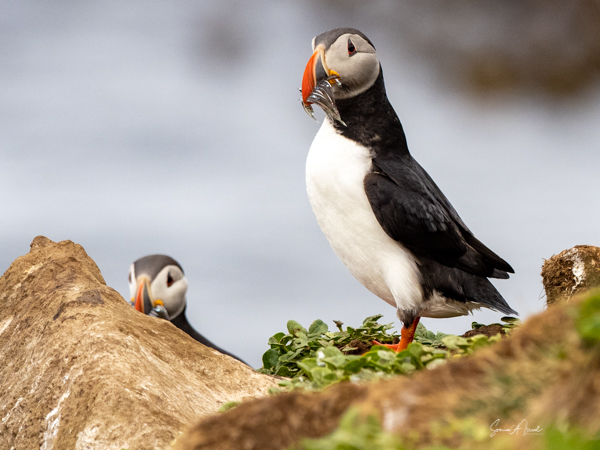
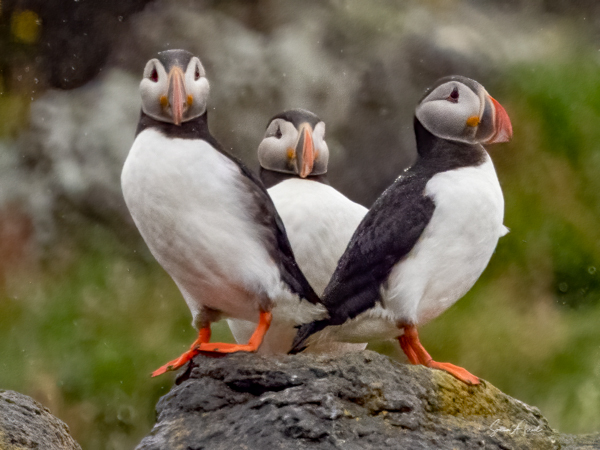

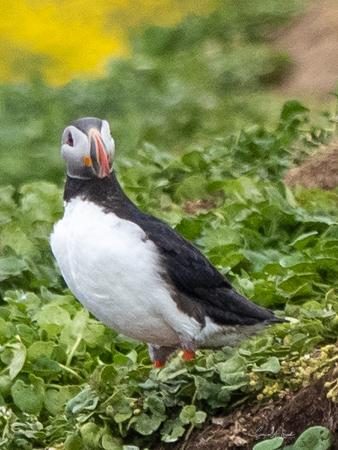
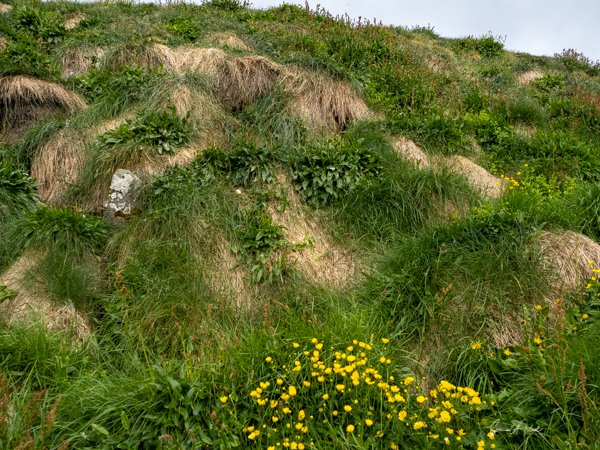
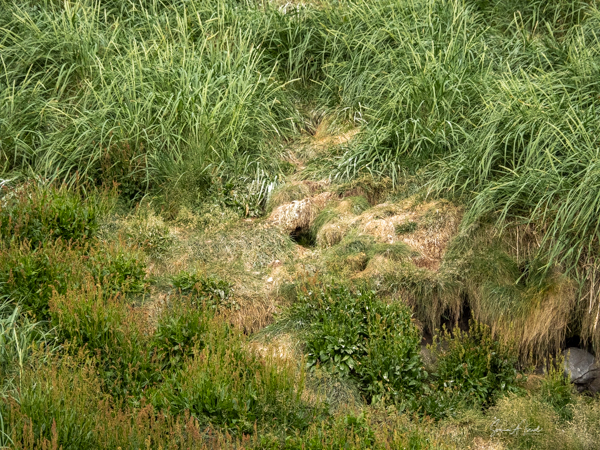
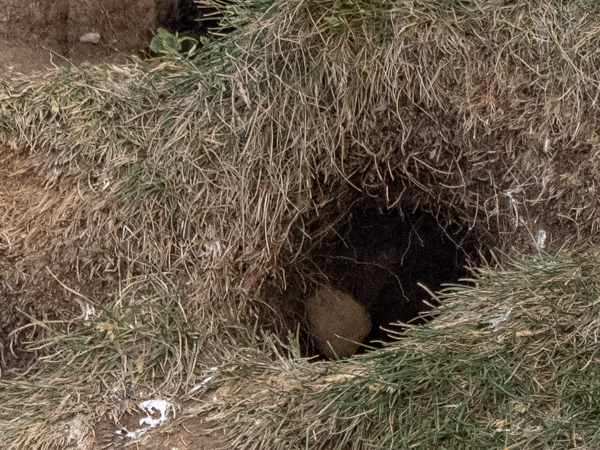
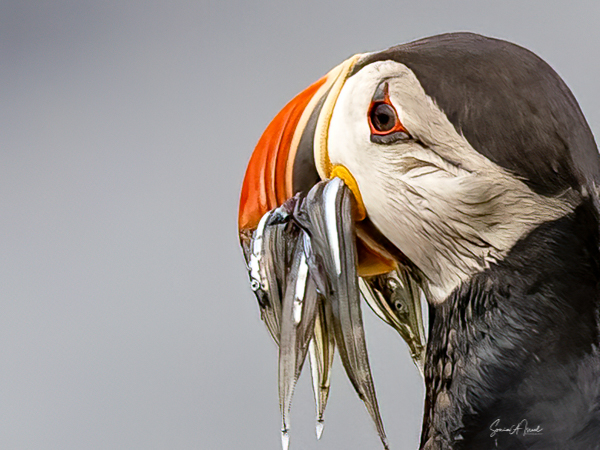
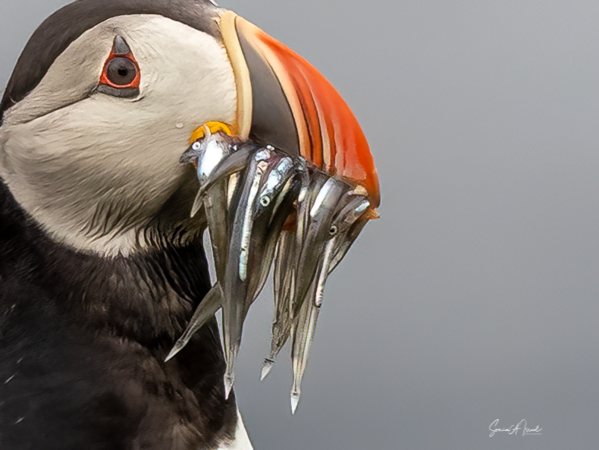
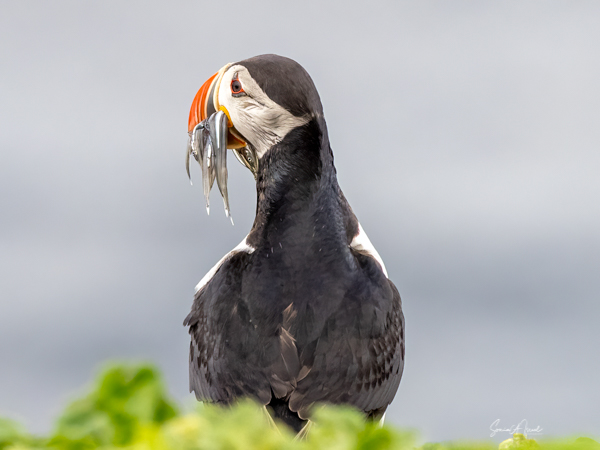
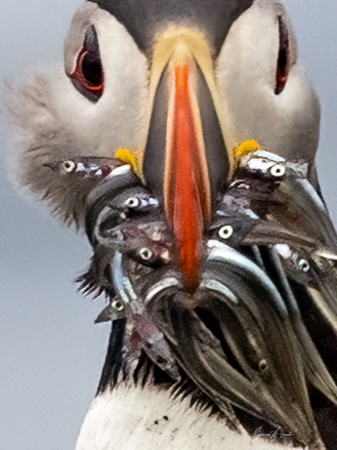
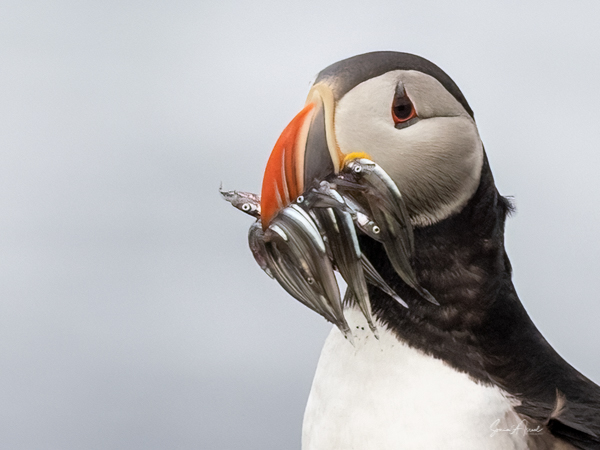

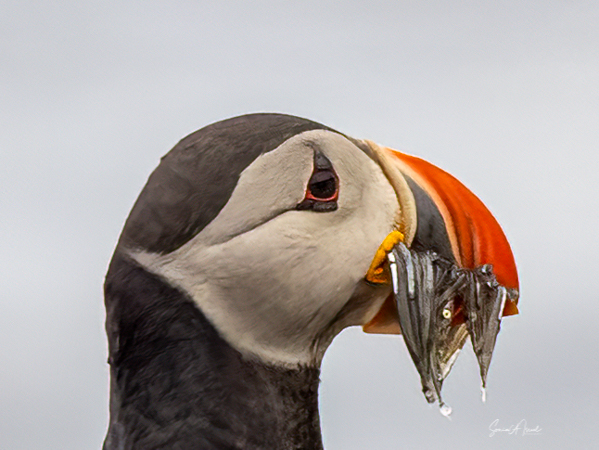
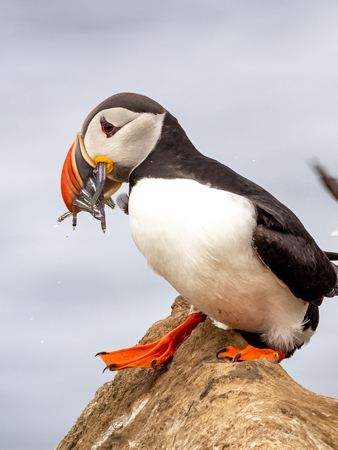
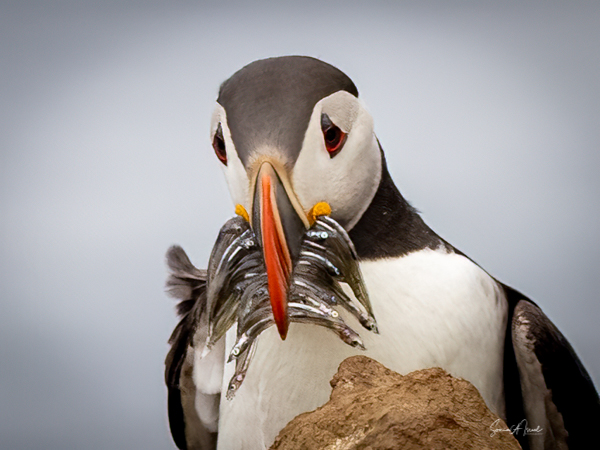

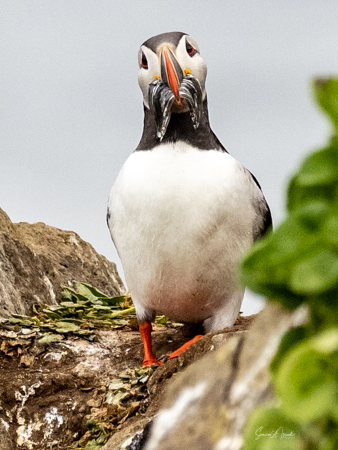
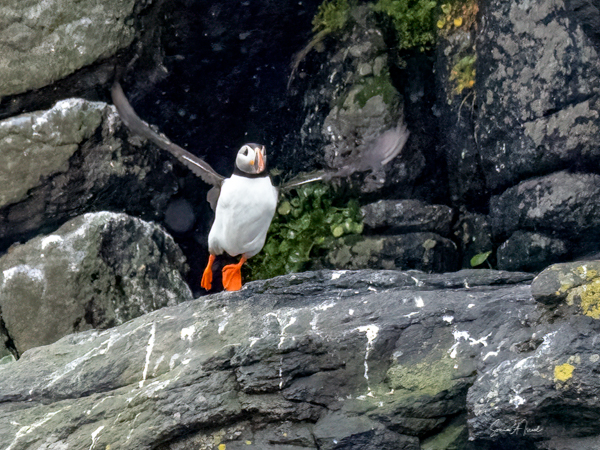

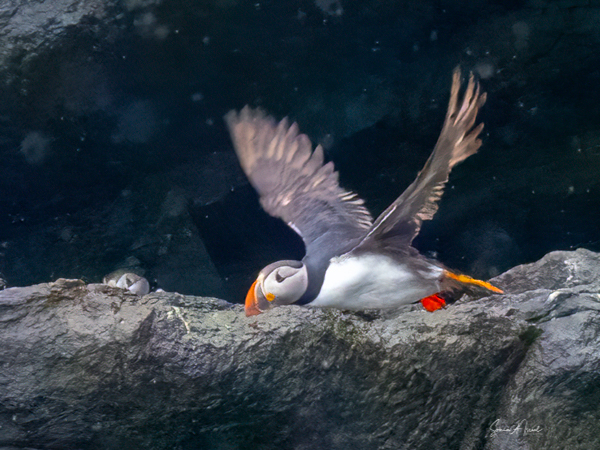
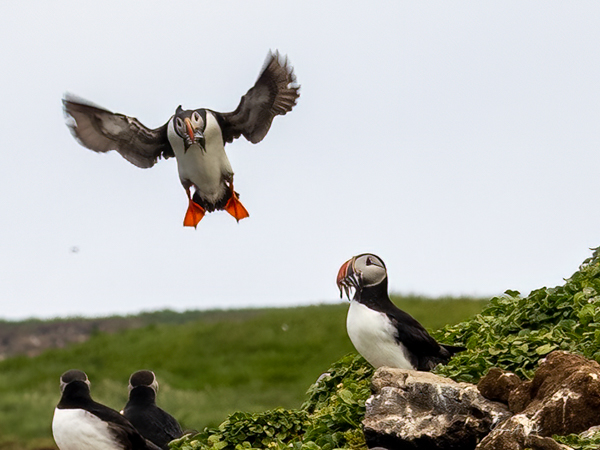
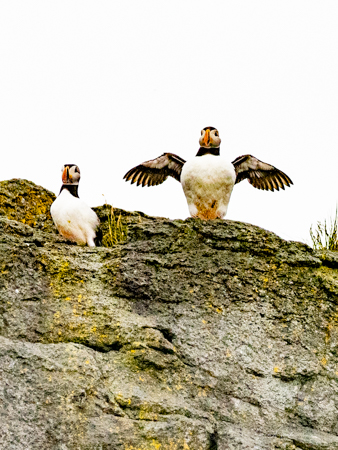
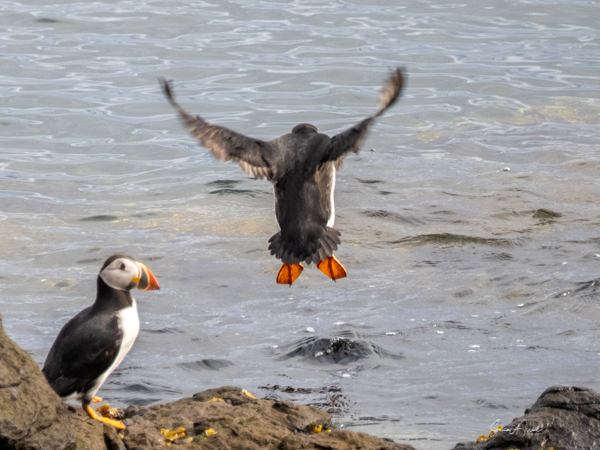
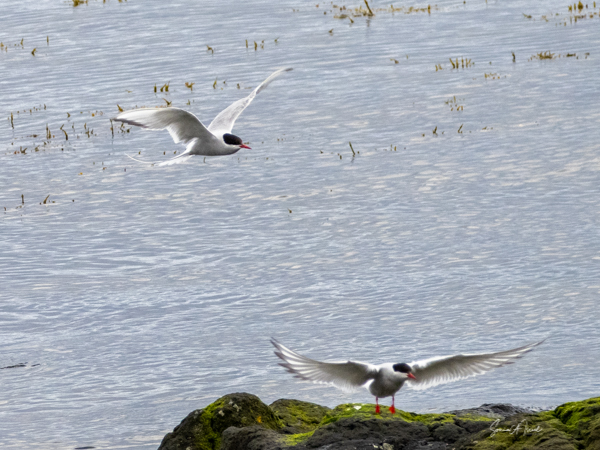
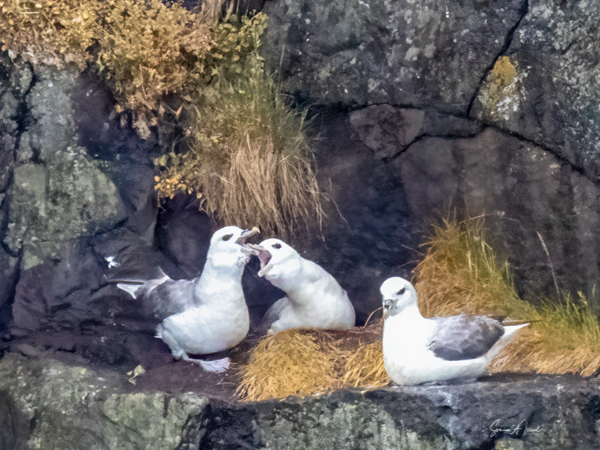
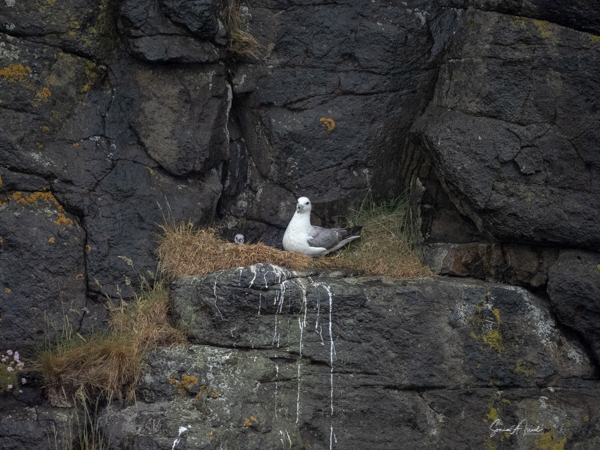
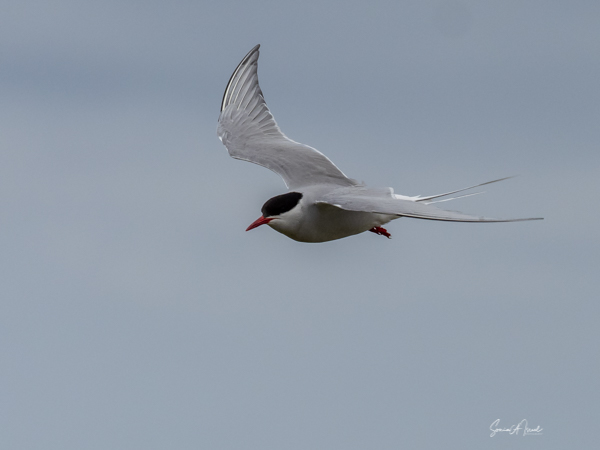
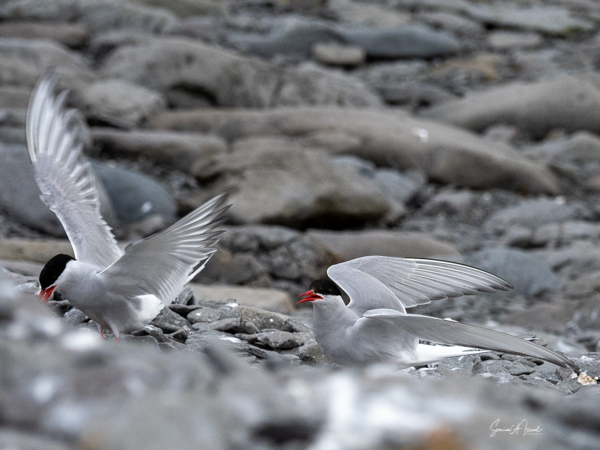
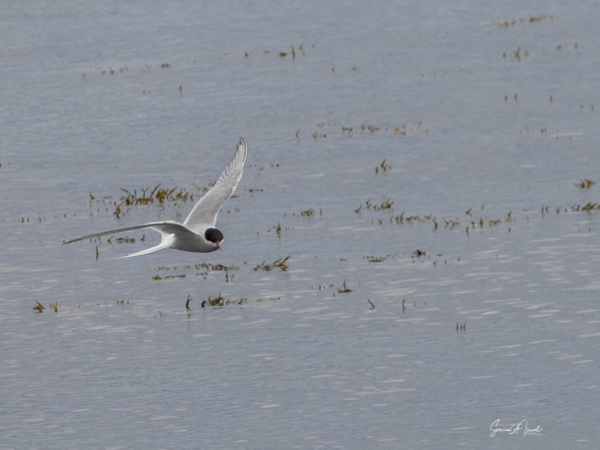
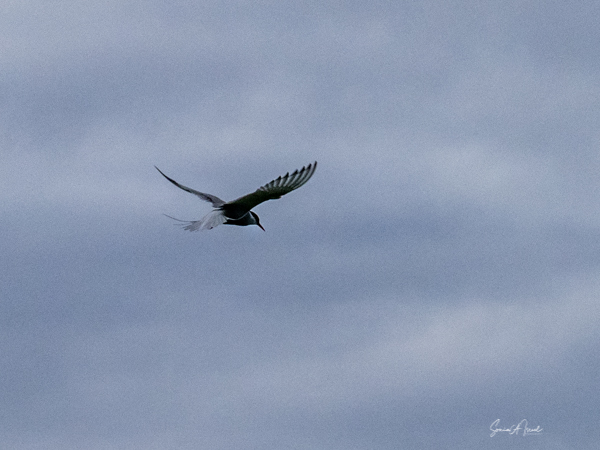

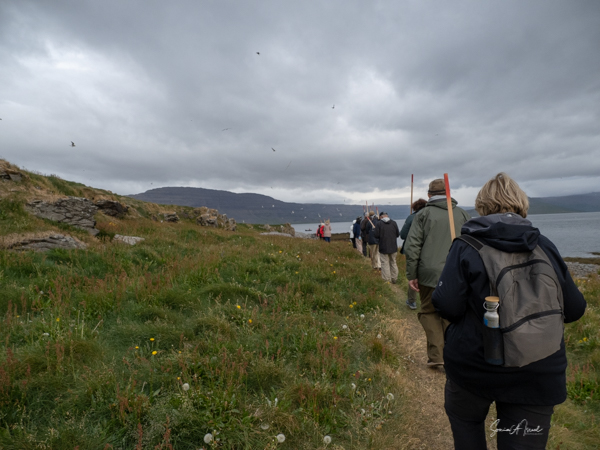
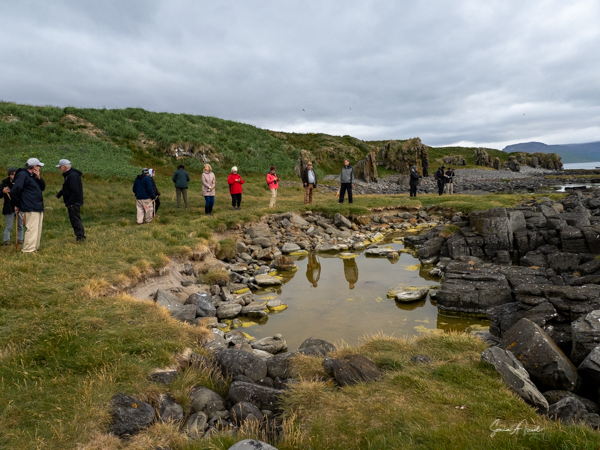
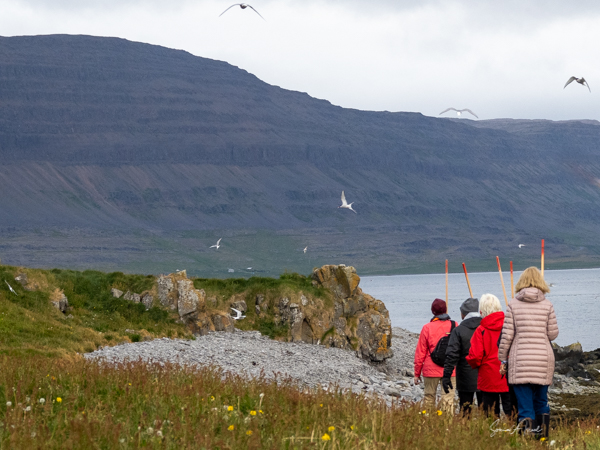
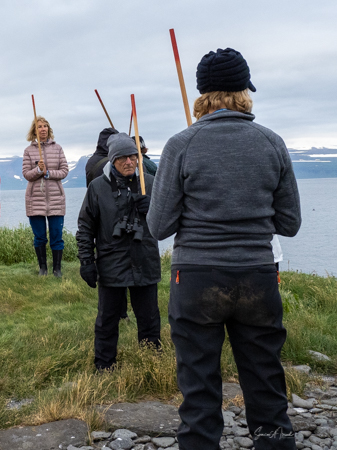
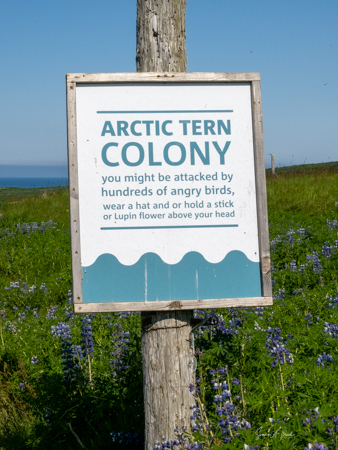


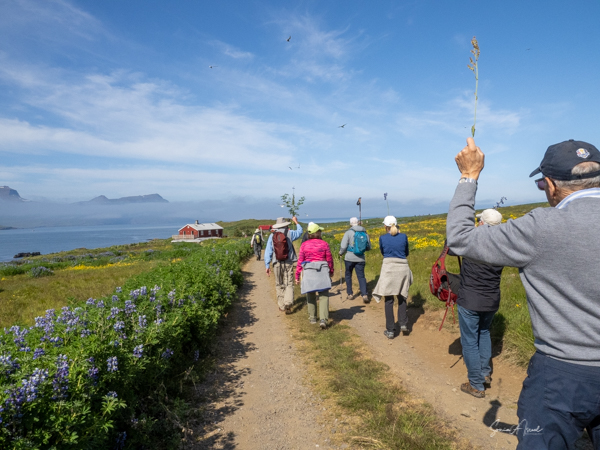
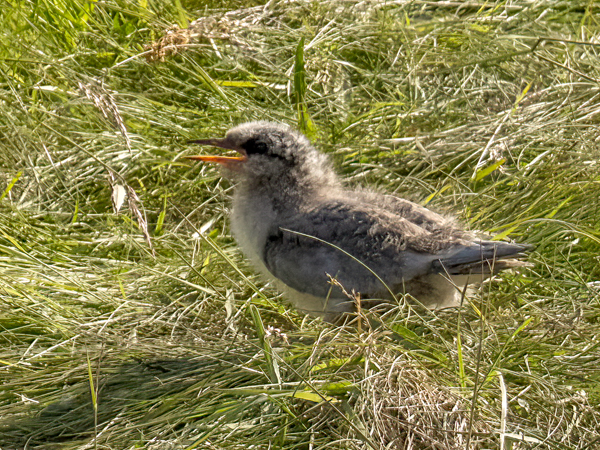
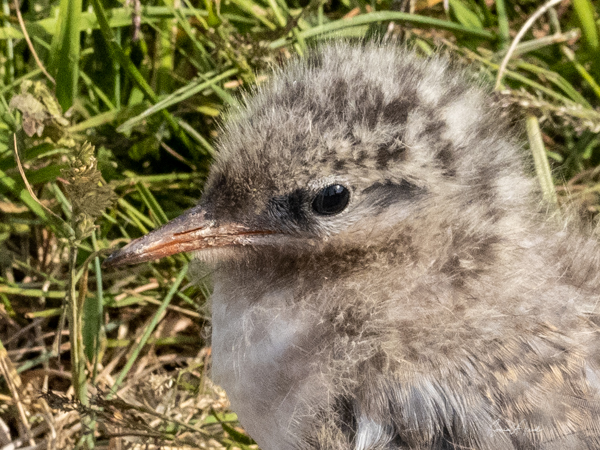
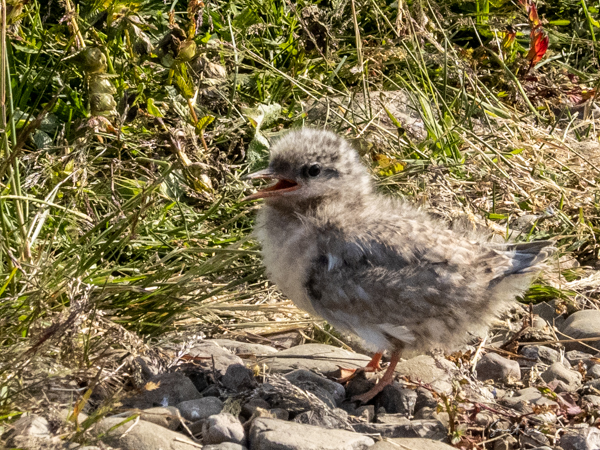

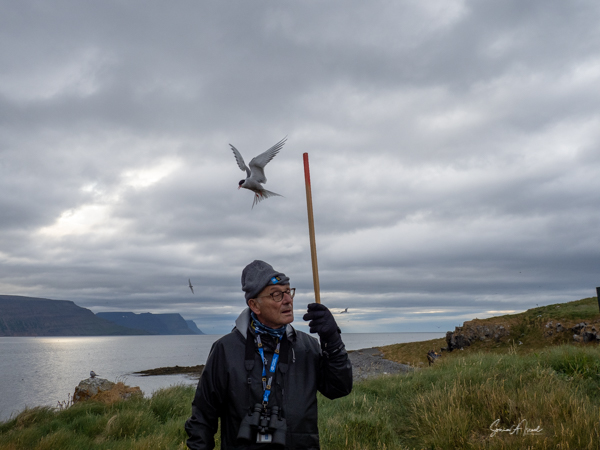
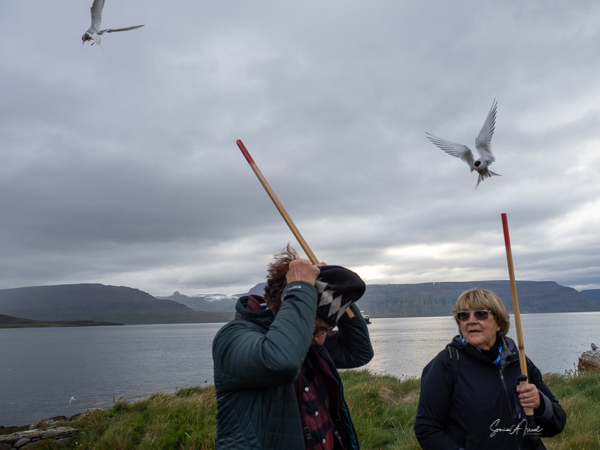
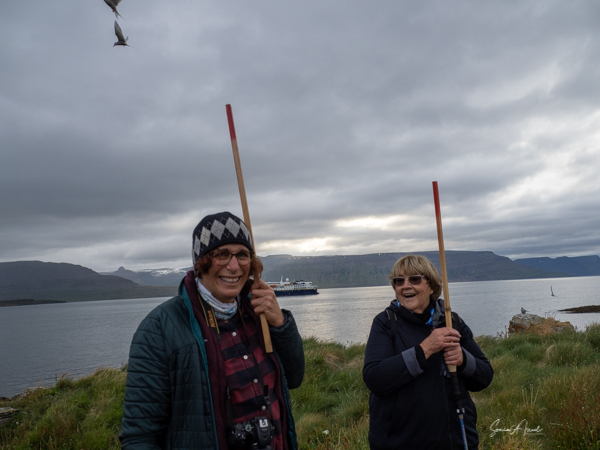
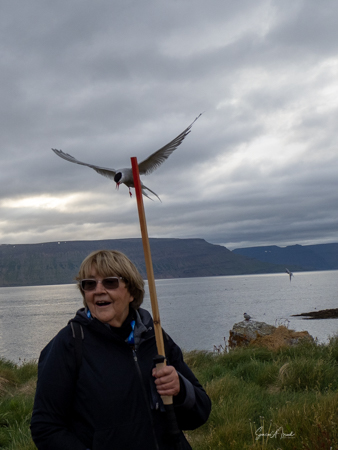
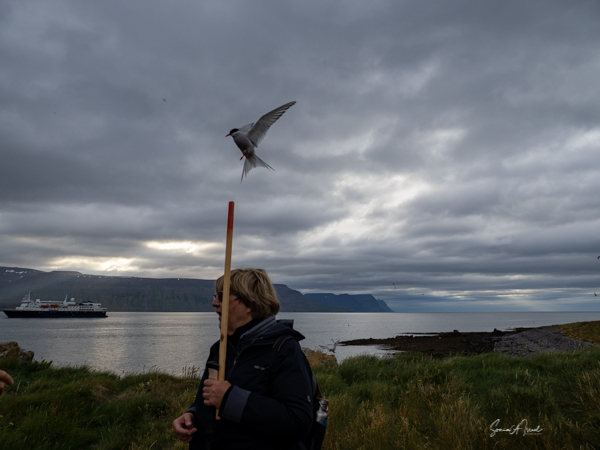
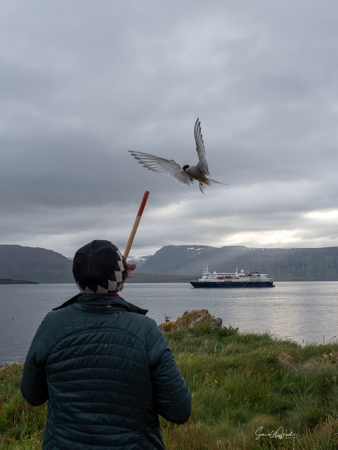
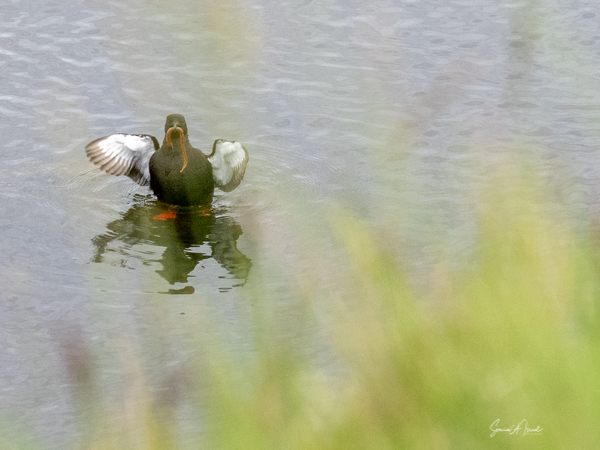
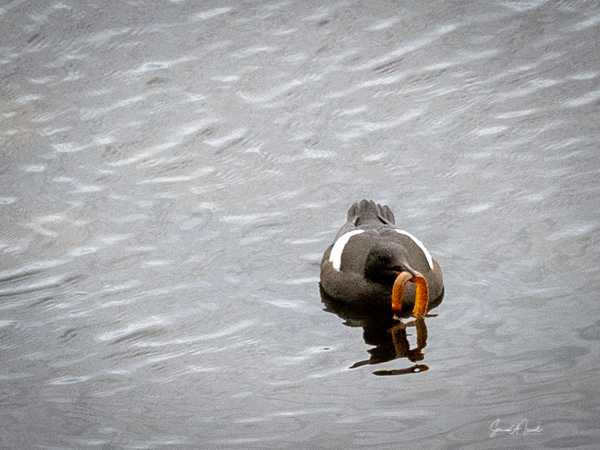
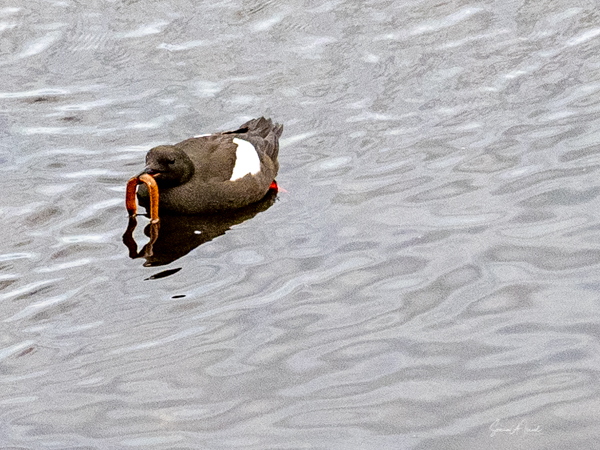
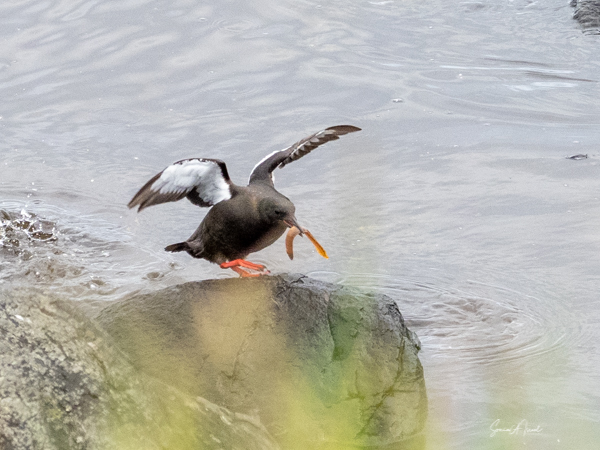
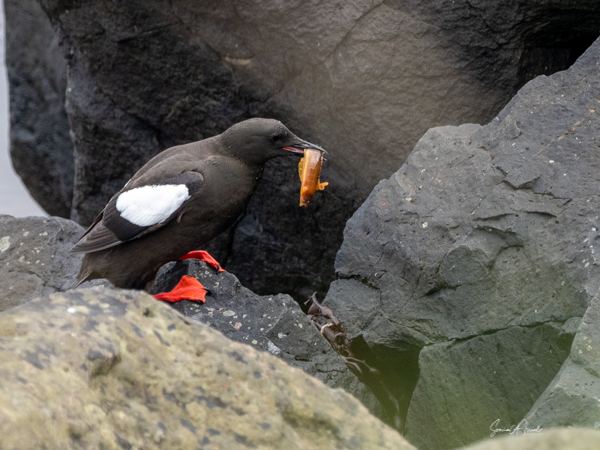
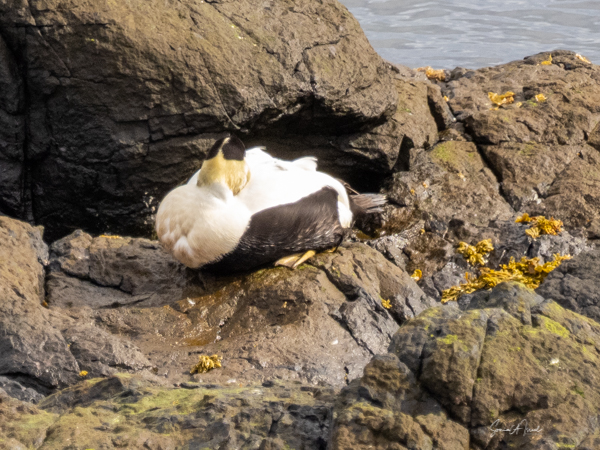

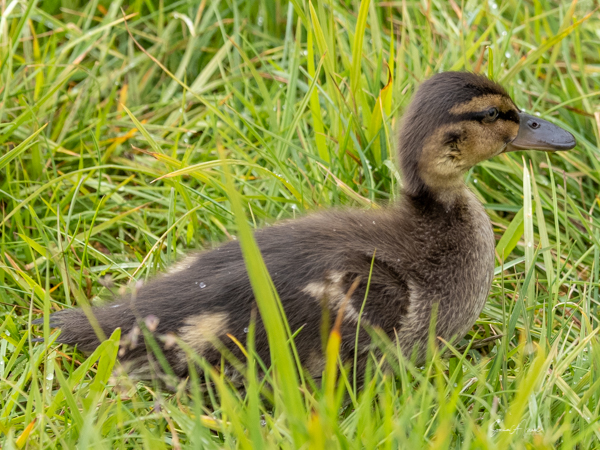
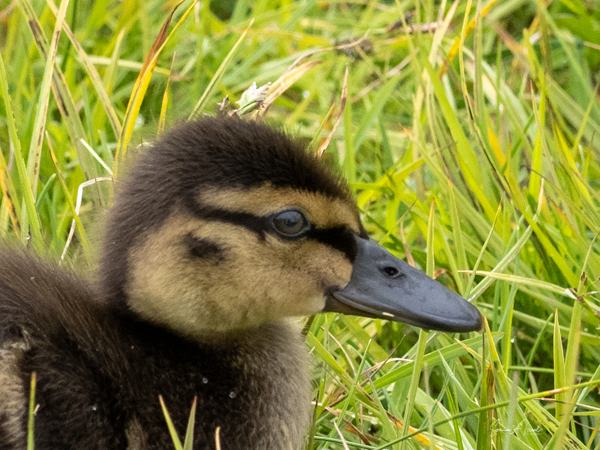

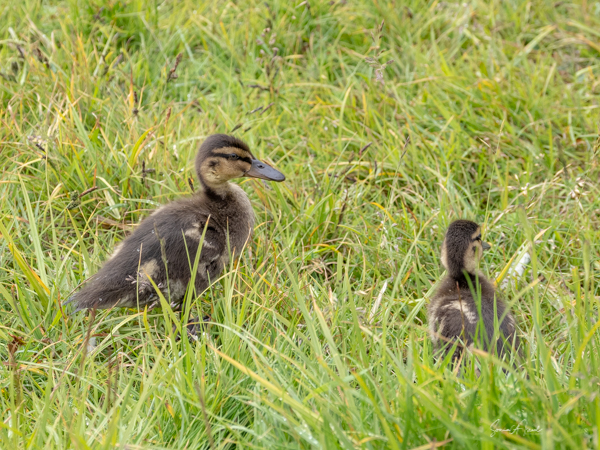
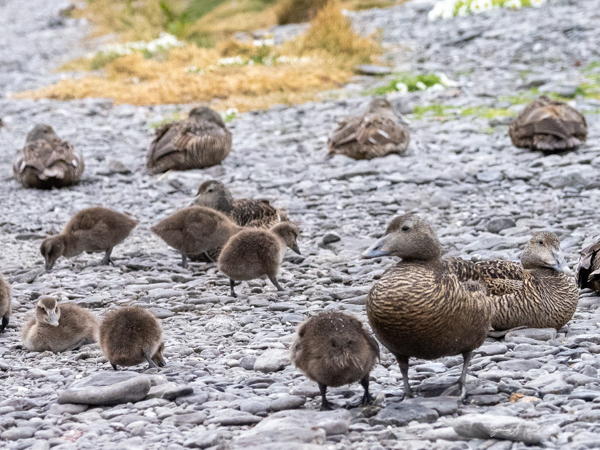
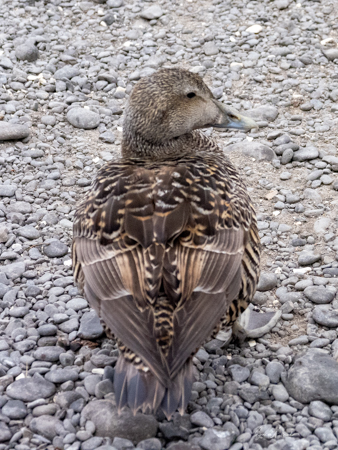
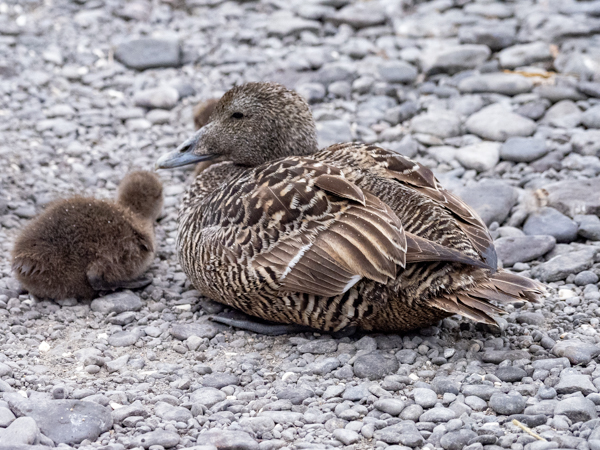
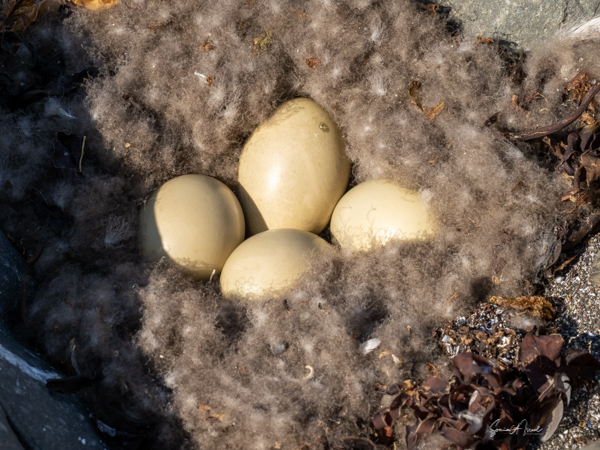
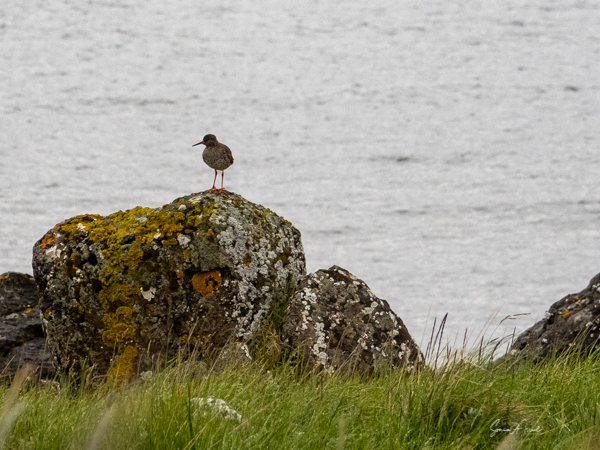

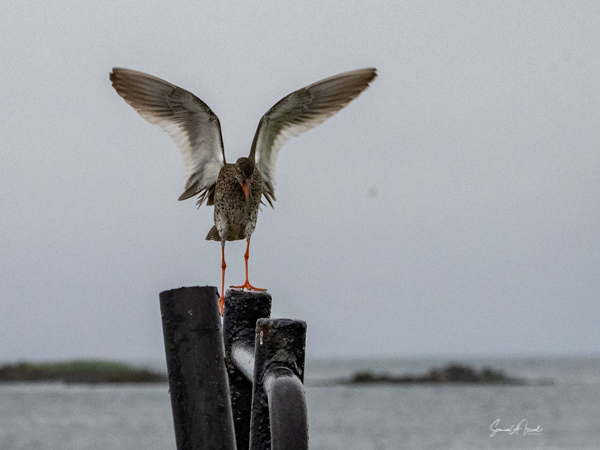
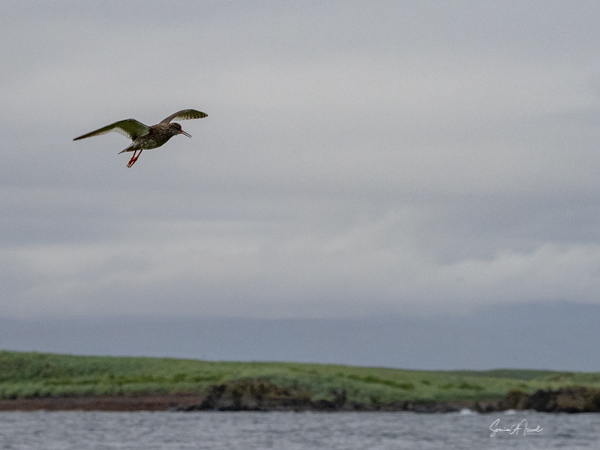
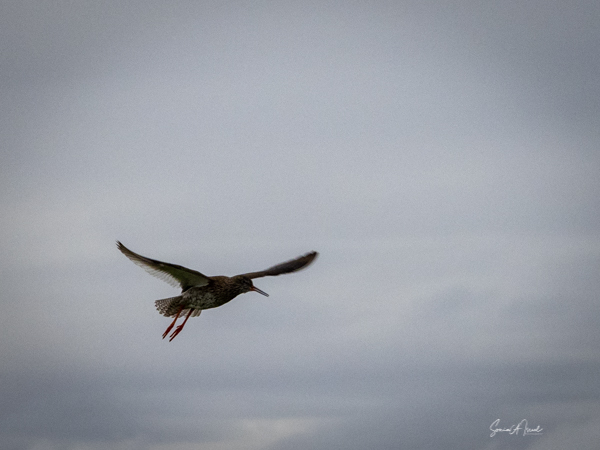
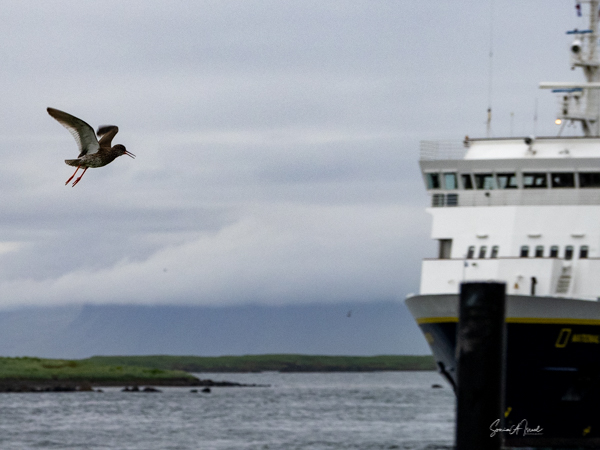
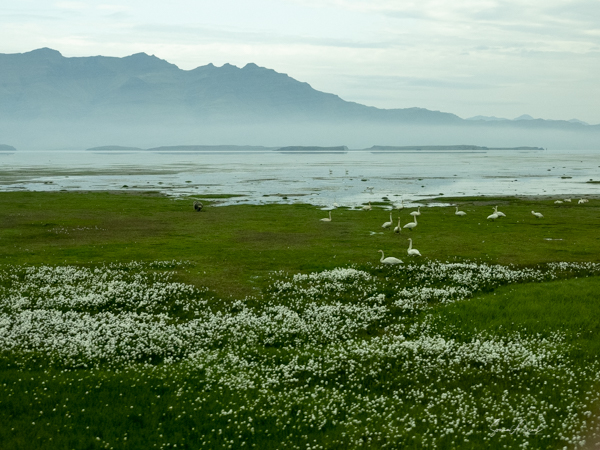
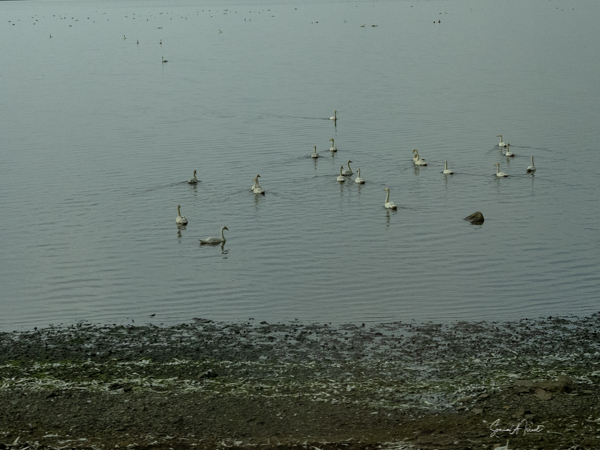
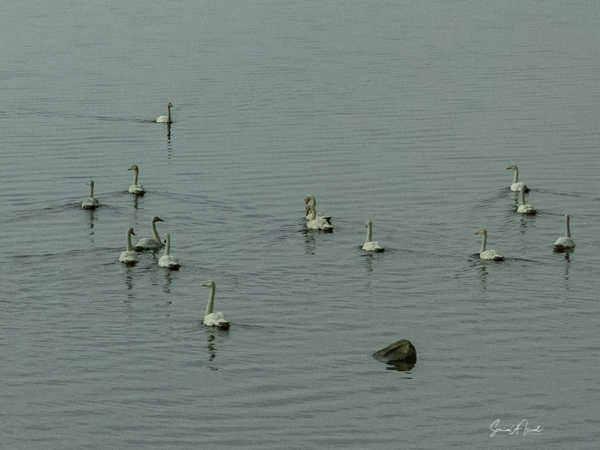
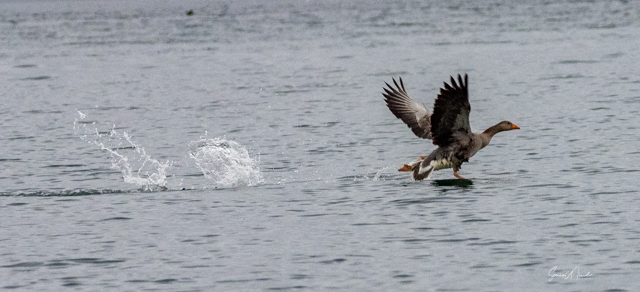
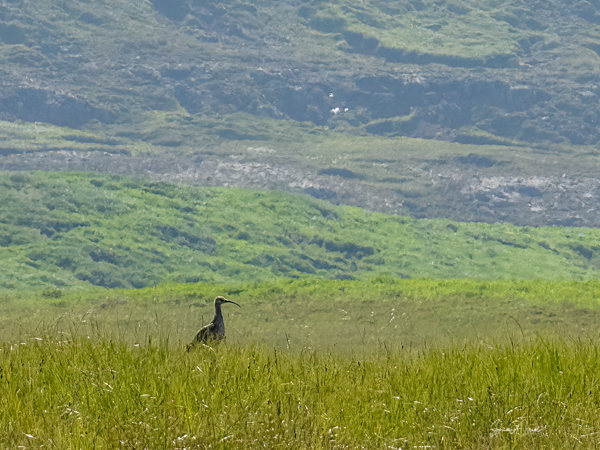
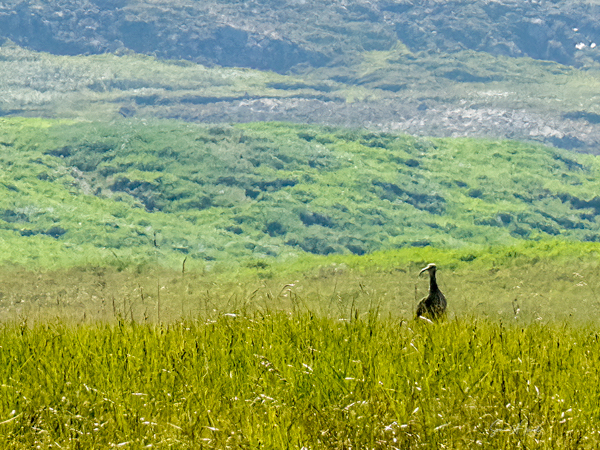
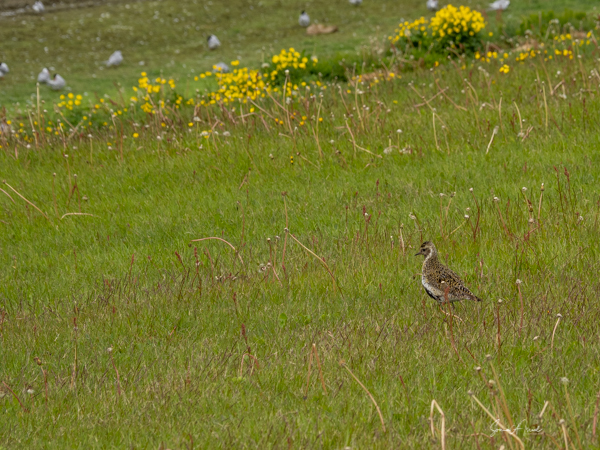
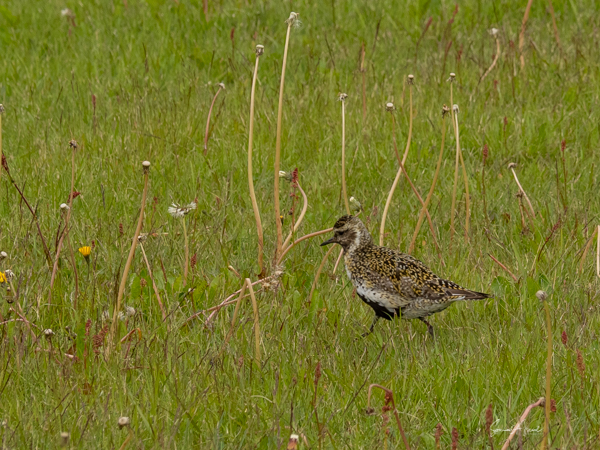
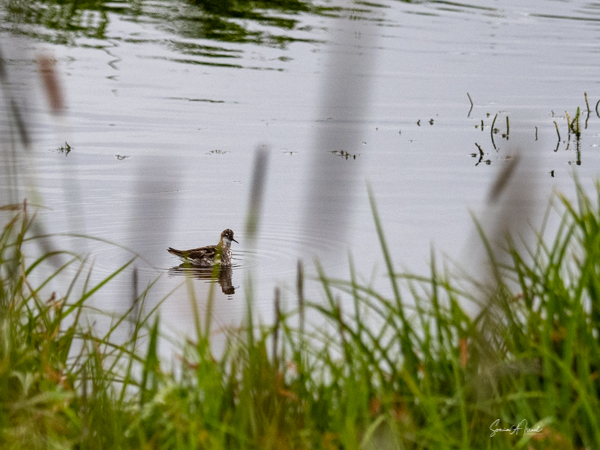
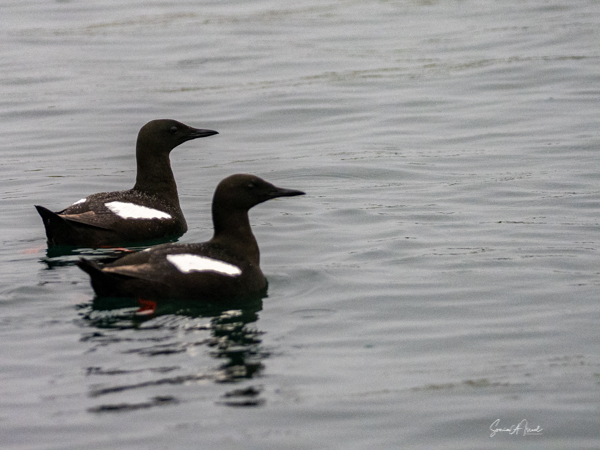
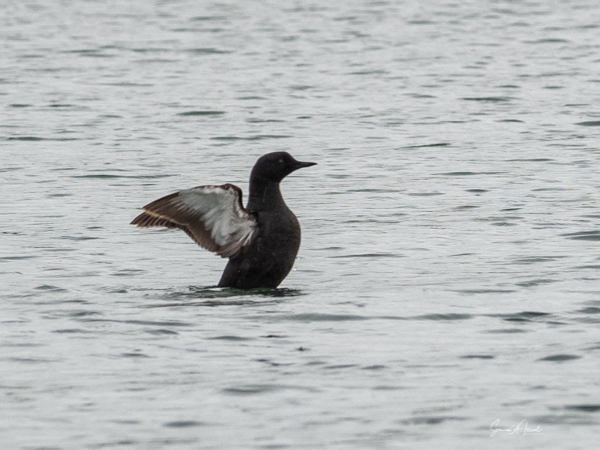
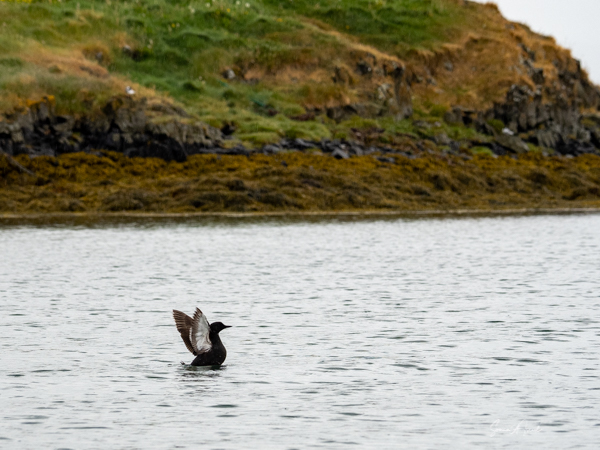

Francine Butler
Loved reading about your adventure–you are awesome!
Ben Smarr
I love the description of puffins! “Footballs” reminded me of the time I got to swim with little penguins, and the first time one swooped past me I was both amazed at the speed, and laughing because it reminded me like nothing so much as a wadded pair of wool socks. Soft football. Very silly looking.
I had not idea about the whooping swans! That’s very cool. Thanks for all the detailed vicarious bird experience!